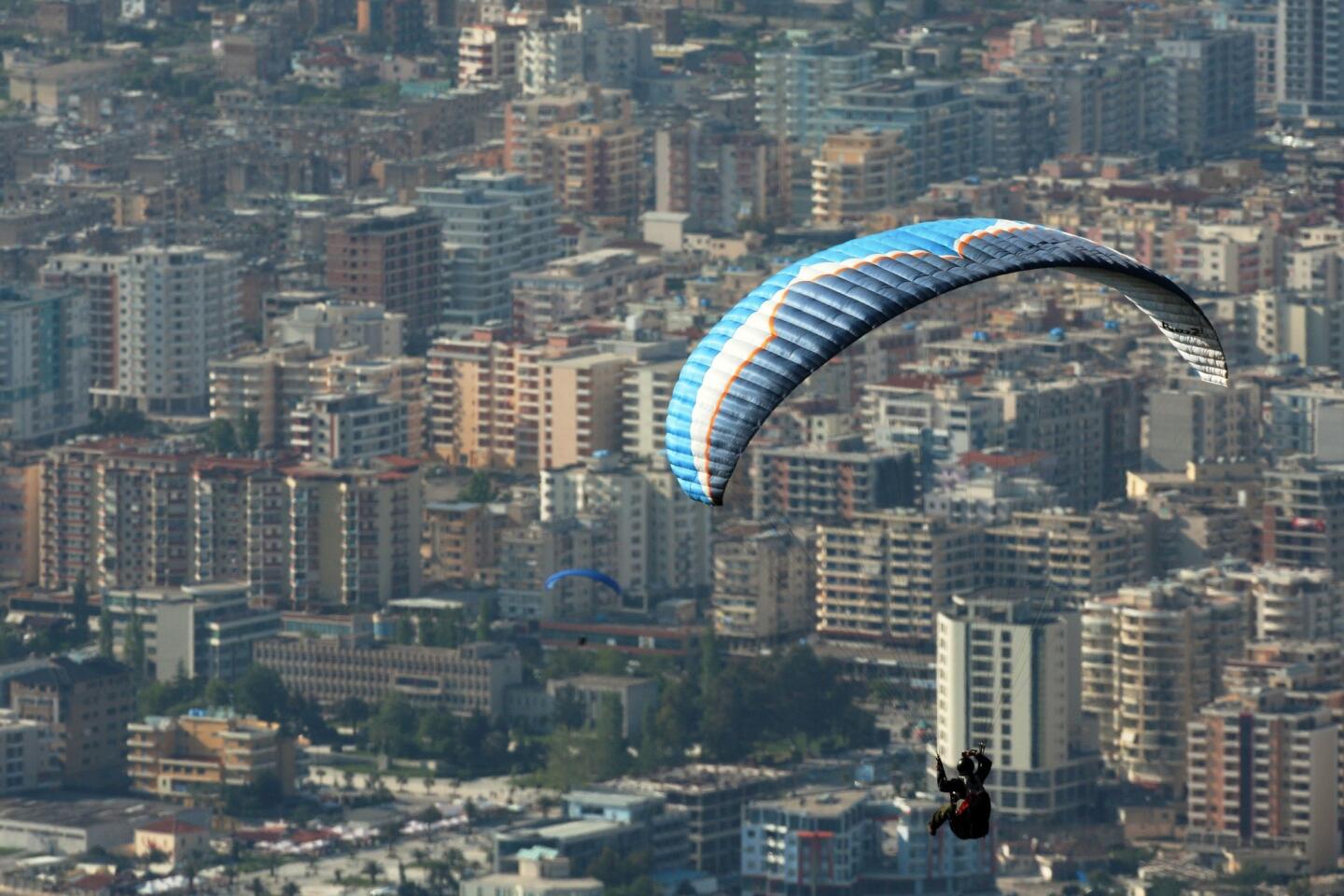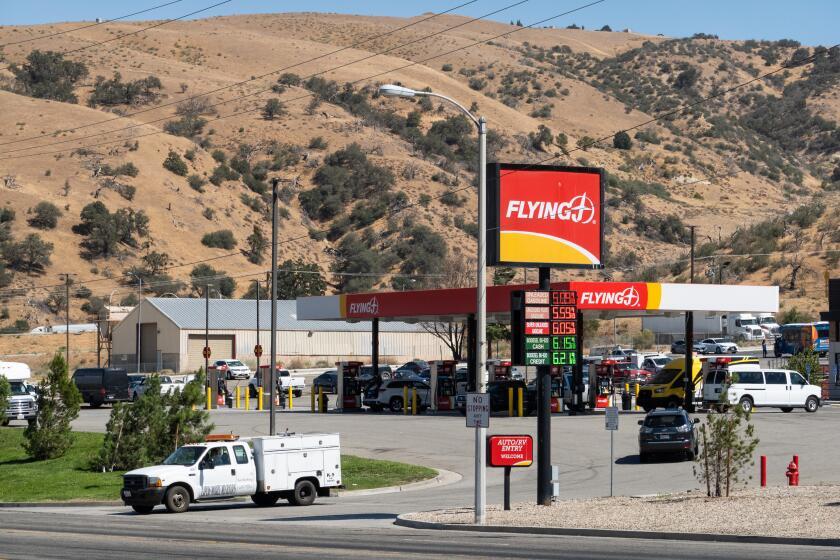Considering a trip to Europe? Look past the crowds and hefty price tag of Europe’s usual suspects and venture onto a road less traveled.
Beyond Rome, Paris, London and the like, Europe offers a vast and varied cache of history, beauty and culture. The landscapes of France’s Barbizon inspired 19th Century artists. Cappadocia’s rock-hewn monasteries, a UNESCO World Heritage site, blend Turkey’s natural history with religious lore. Zagreb, past Croatia’s decades of conflict, is blossoming into a vibrant and colorful capital city.
--Los Angeles Times
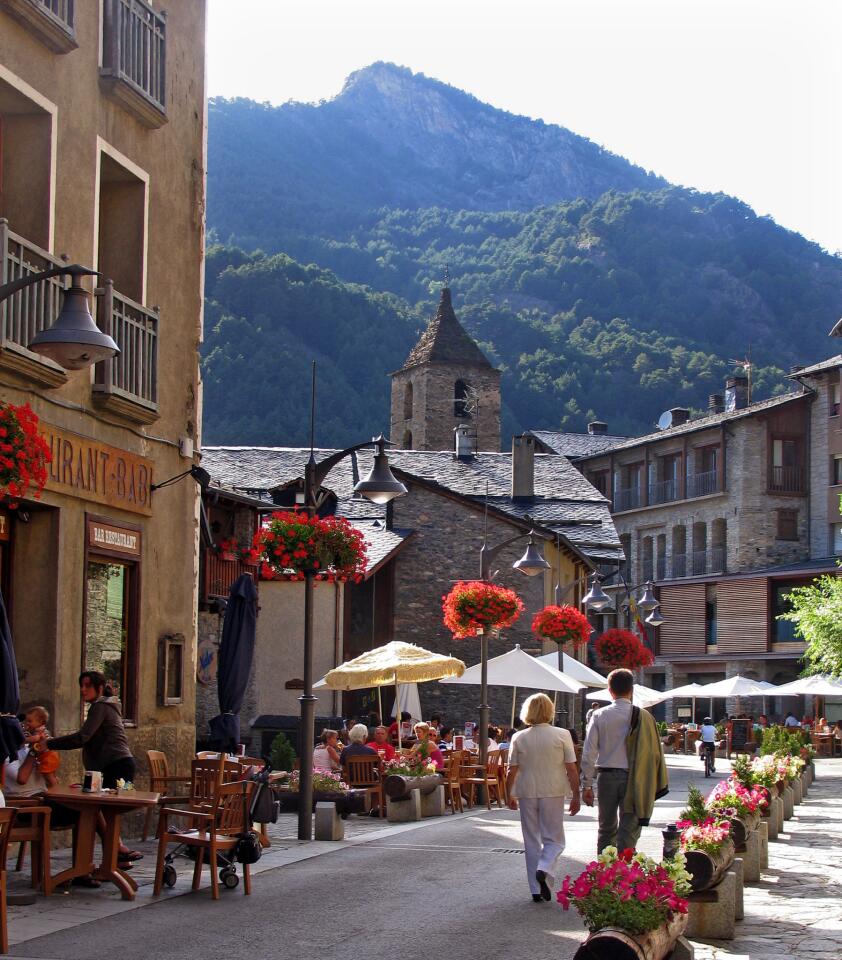
Andorra lines a high pass in the Pyrenees between France and Spain. I drove in from the north, noting the long line of cars headed in the opposite direction, stalled at a customs booth on the French border, where officials were opening trunks to inspect the loads of purchases leaving Andorra, a tax-free shopping mecca. (Susan Spano/Los Angeles Times / )
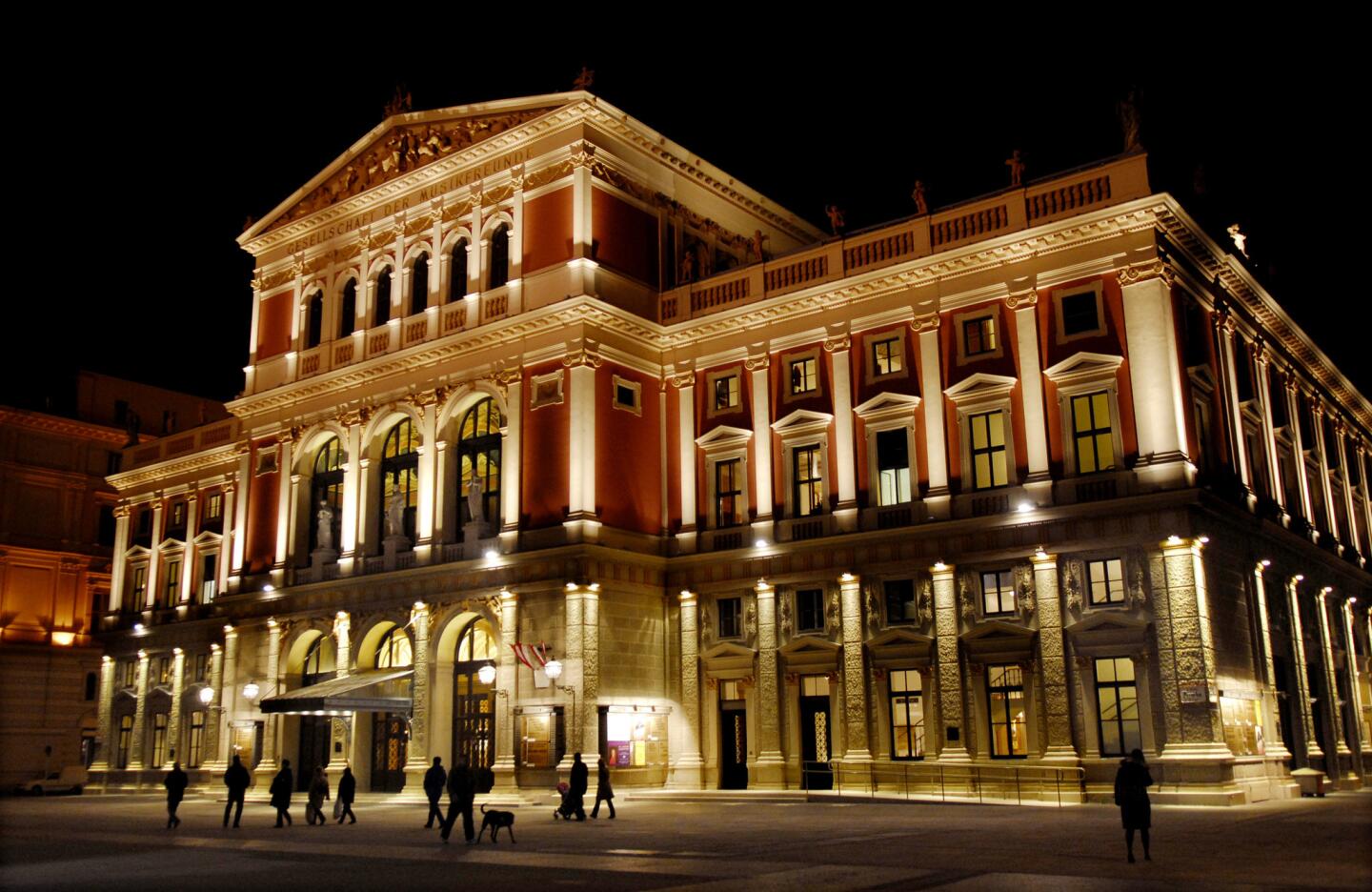
You can’t escape classical music here. Its history hits you almost from the moment you step out of the City Air Terminal: the bust of Bruckner at the lovely Stadtpark and, around the corner from there, a full-size gold statue of Johann Strauss, the waltz king. In the city center, the Staatsoper, the city’s famed opera house that gives Vienna its geographical and cultural bearings.
It is the city of Mozart, Beethoven, Schubert, Strauss, Bruckner, Mahler, Schoenberg, Berg and Webern, and their work has created a pervasive cultural soundtrack in a city whose historic splendor and beauty are second only to Paris among European capitals.
But the old is giving way to the new. Vienna is on the verge of becoming a modern, multicultural city. After decades of postwar cultural conservatism and a recent spell of political extremism, Vienna is trying to steady its bearings as a 21st century city, a crossroads between Western and Eastern Europe, an intersection between past and present.
-- Mark Swed
Pictured: Musikverein concert hall. (Samuel Kubani / For The Times)
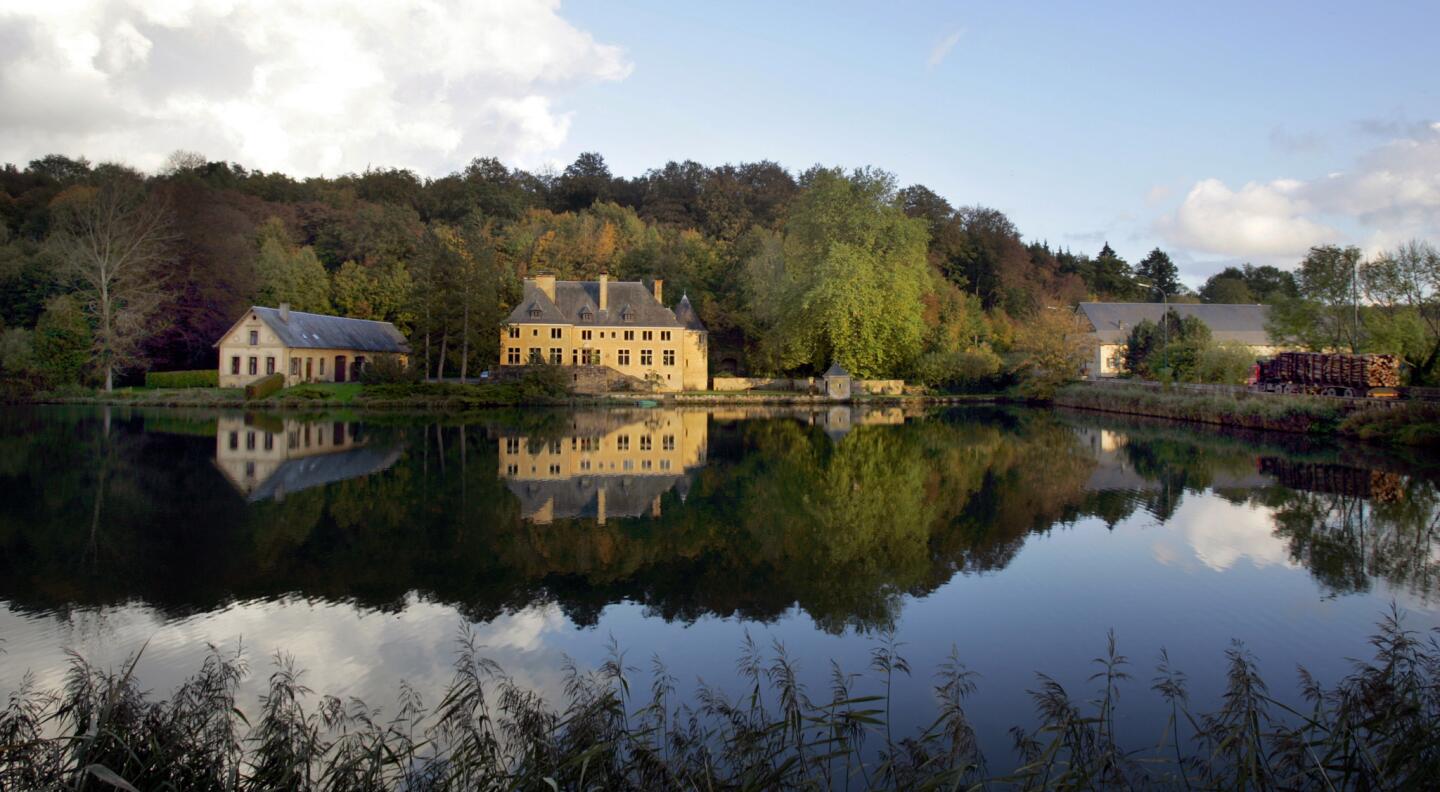
The Ardennes is an amorphous region of southeastern Belgium, Luxembourg and France. The name which comes from the Gaulish word arduenna, goddess of hunting denotes a forest and weathered massifs lined by rocky cliffs. I doubt many Americans could pinpoint it on a map.
The confusion is understandable because the Ardennes is in the geographically confusing, culturally blended heart of the Continent. The region, contested in the 1944 Battle of the Bulge, was a German portal to the west in both World Wars. Its language and wines are French; its taste for robust meat and potatoes German; its modest, gray stone villages with bulb-shaped church steeples quintessentially Belgian.
-- Susan Spano
Read more: Belgium’s gentle fall
Pictured: The Semois River. (Gina Ferazzi / Los Angeles Times)
Advertisement
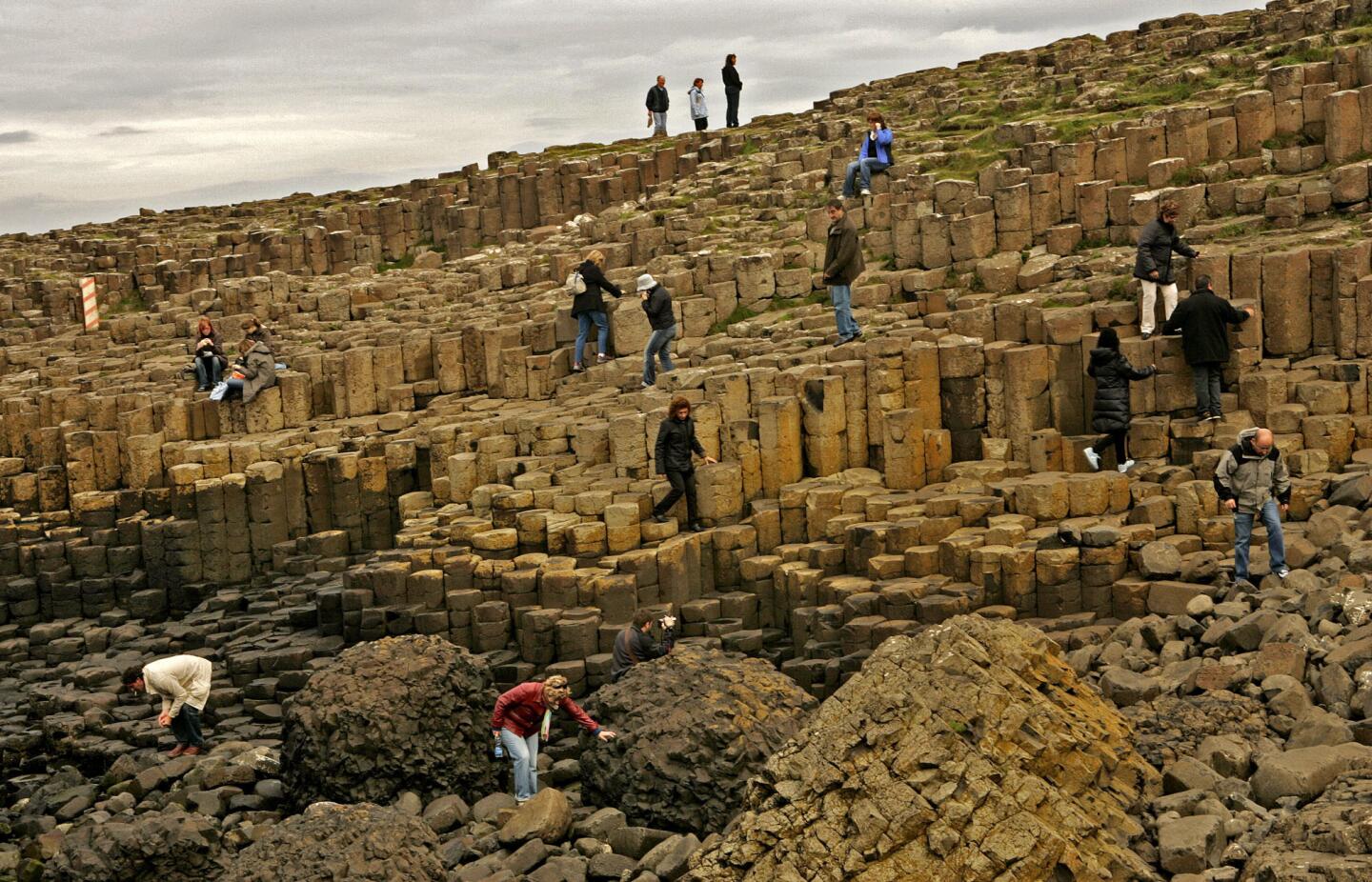
The Giants Causeway, at the foot of basalt cliffs in Northern Ireland, is made up of 40,000 black basalt columns jutting out of the ocean. Volcanic activity 50 million to 60 million years ago created these step-like columns on the edge of the Antrim plateau.
Three periods of volcanic activity created the different parts of the causeway, also referred to as the Lower, Middle and Upper Basalts; the Middle Basalt portion features the famous hexagonal columns of the Causeway.
The 40,000 stone columns are mostly hexagonal, or six-sided, but some have four, five, seven or eight sides. The tallest are about 40 feet. The thickest can be up to 90 feet.
Read more:
Pictured: The columns of Giant’s Causeway. (Anne Cusack / Los Angeles Times)
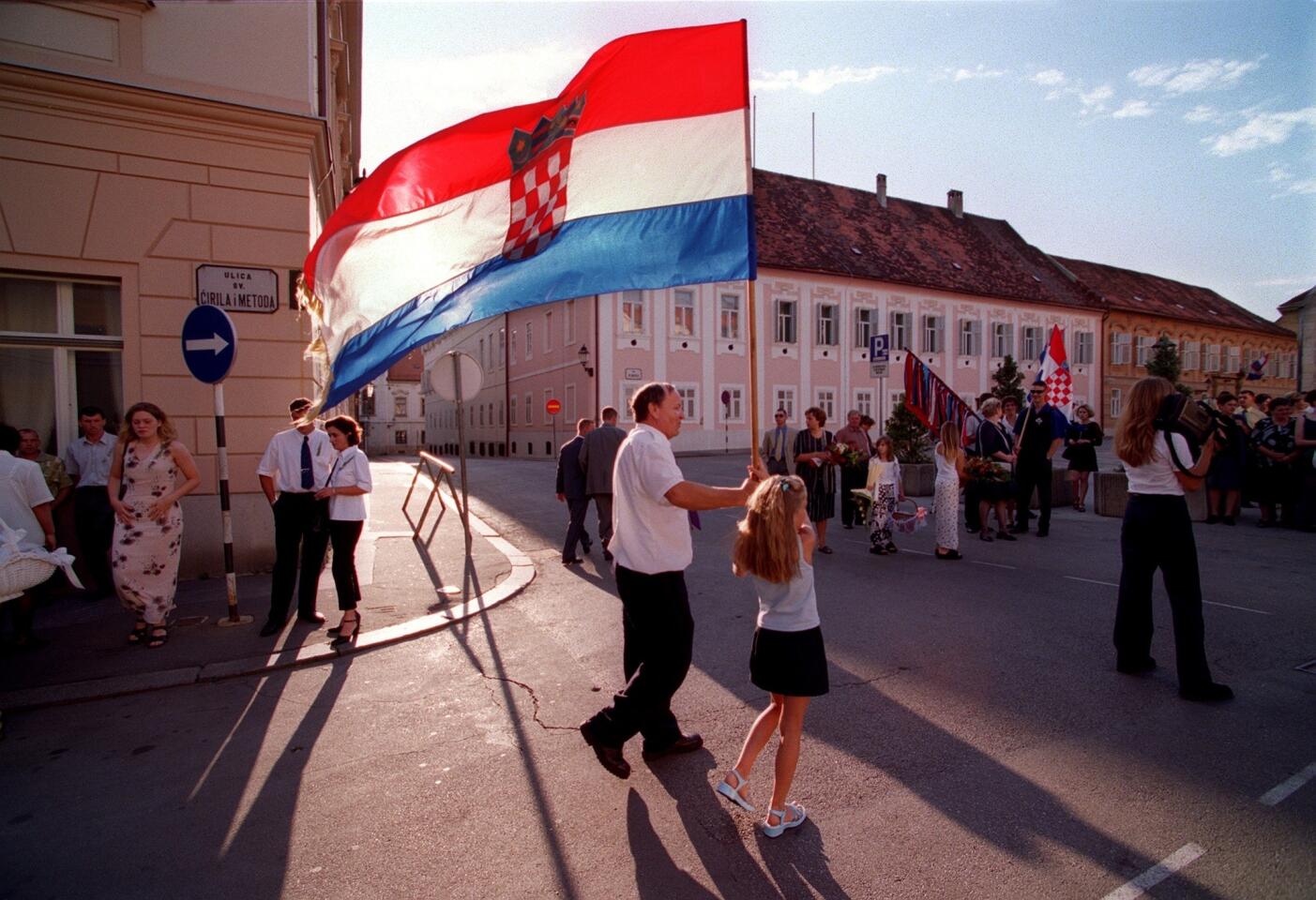
Over the Cold War years and again during the conflicts of the 1990s, Zagreb had filtered through my imagination mostly as a black-and-white image of a troubled and fragmented Yugoslavia.
Now, in person, the capital of an at-last independent Croatia shows off its colors and vibrancy. Maybe it always was thus, but it never came to mind as one of the must-see cities on the Continent.
The Day of the Whistles dawned with misty rain, the sort of drab beginning that can make an aged metropolis feel mysterious, even grim and threatening. But the students brightened everything, even the inclemency. It was a fine time to find a cafe and watch the party rev up.
-- Robert Cross
Read more: Zagreb, Croatia: Europe’s new star
Pictured: A wedding ceremony in Zagreb. (Al Seib / Los Angeles Times)
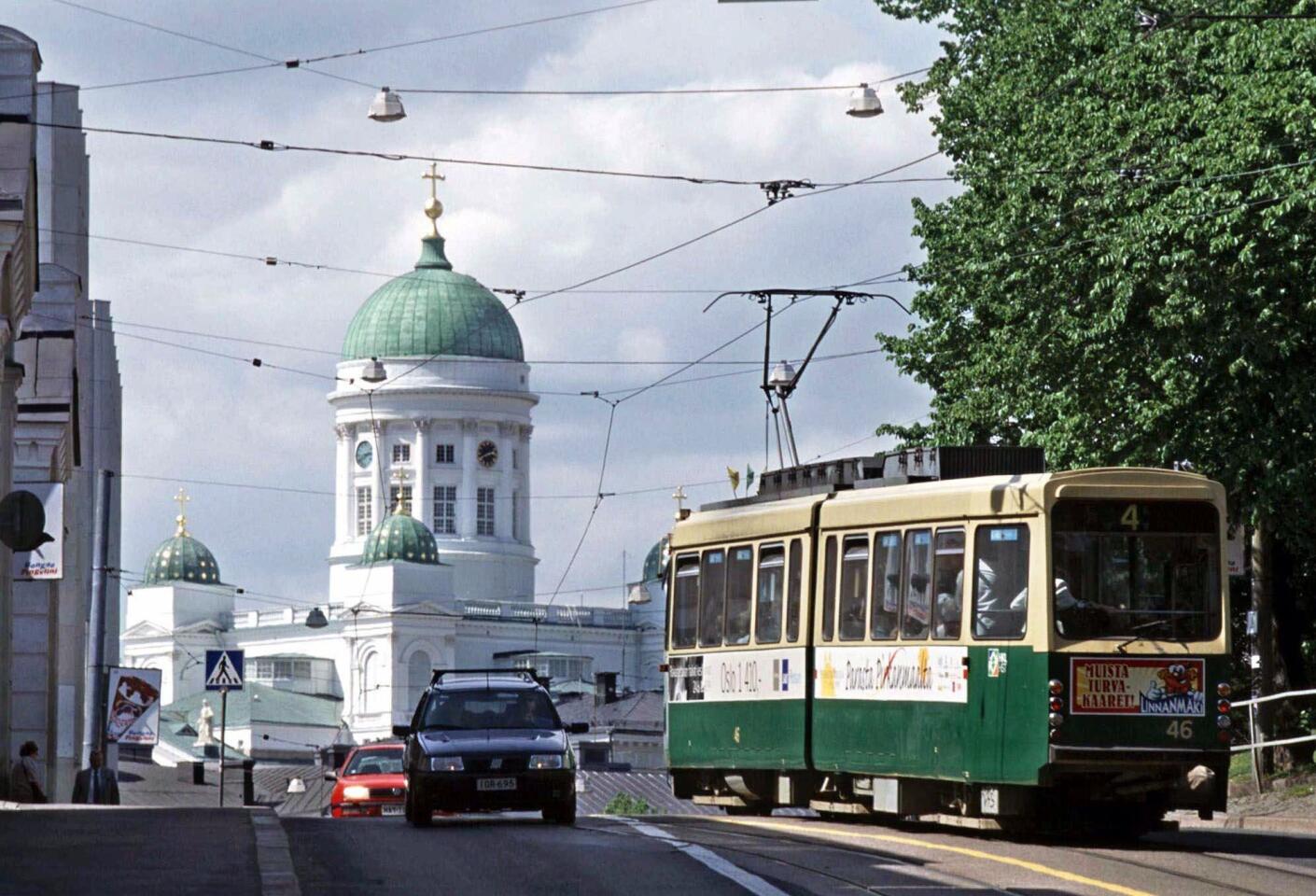
Fall and winter, with long nights and chilly temperatures, may not seem like the best seasons to visit Helsinki, but for design fans it’s prime time. The action moves indoors to the Modernist spaces that have made this country famous -- shops, hotels, restaurants -- plus a whole design district. (Pekka Sakki / Associated Press)
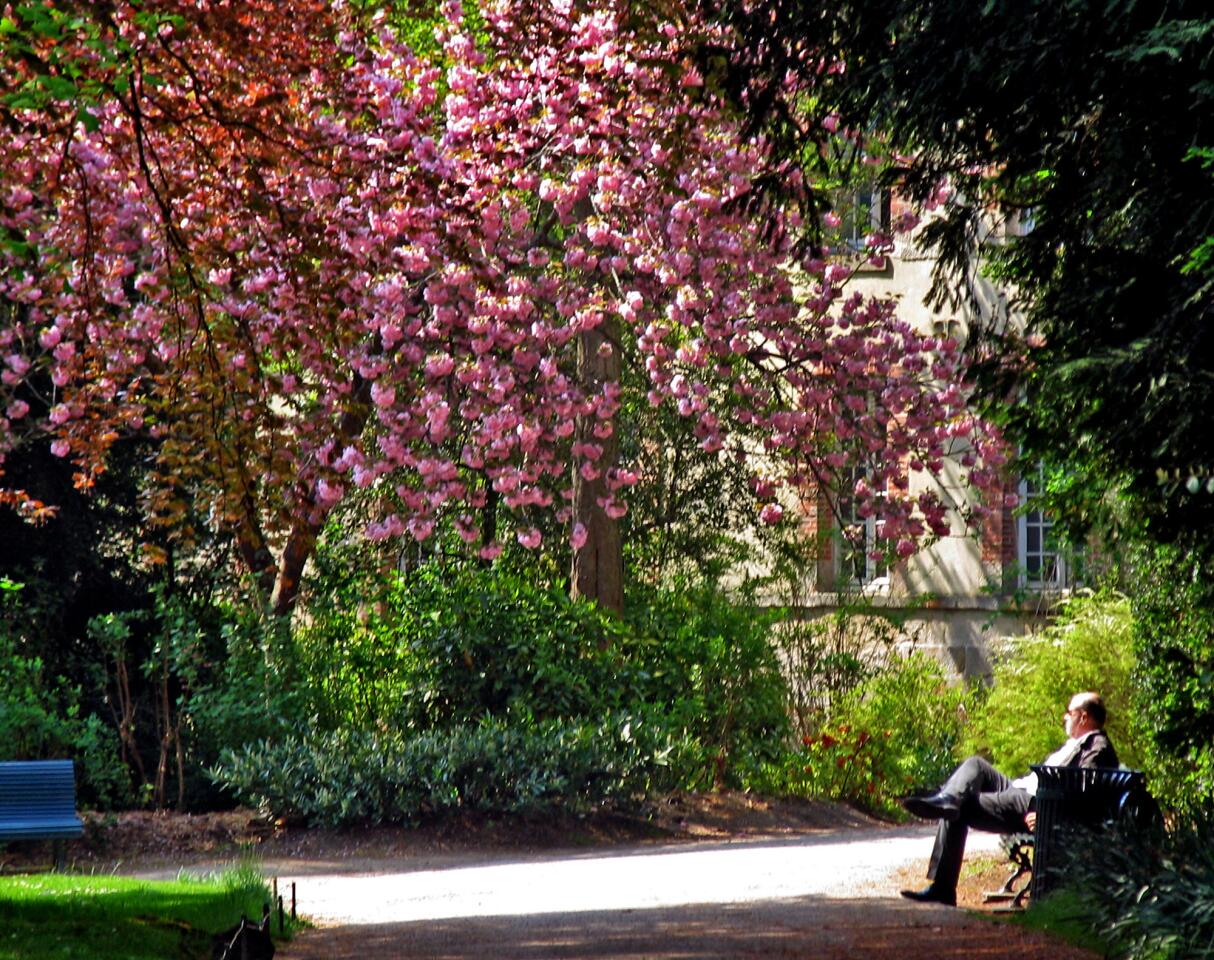
There are fine stone villages all around Fontainebleau Forest, but Barbizon will ever be associated with the school of painters for a simple reason: Along its one narrow Grande Rue were several inns that catered to starving artists. At the Auberge Ganne, run by Francois Ganne and his formidable wife, Edmée, and then at the nearby Hotel Siron, a painter could get a hearty dinner, dormitory bed and sack lunch to take into the woods for a paltry sum, and if he couldn’t pay, credit was readily extended.
-- Susan Spano
Read more: Barbizon’s natural artistry
Pictured: Springtime unfolds in the gardens at the Palace of Fontainebleau. (Susan Spano / Los Angeles Times)
Advertisement

The town of Verdun in northeastern France is famous for sugar-coated almonds.
It is also famous for its
(Susan Spano /Los Angeles Times)
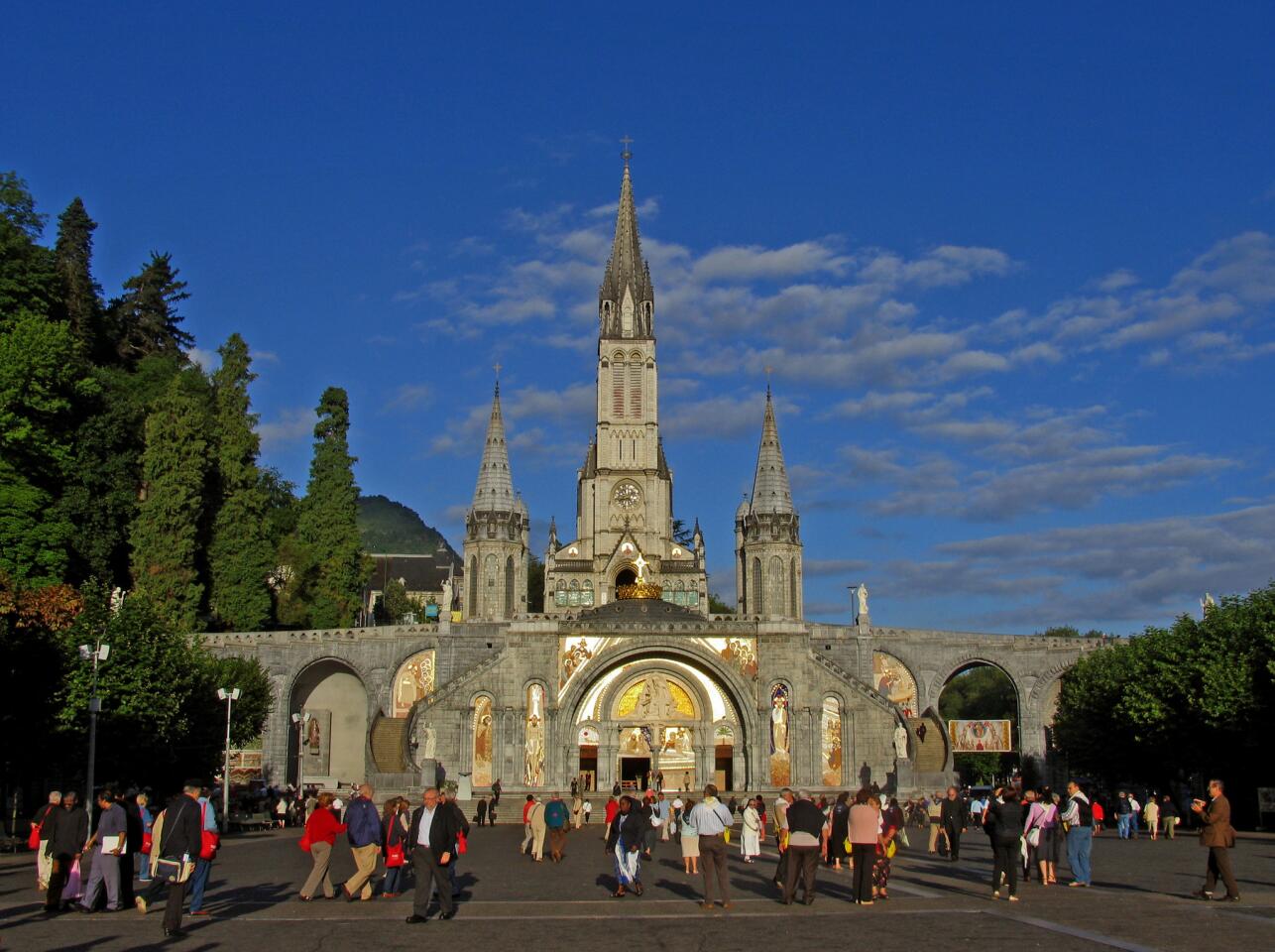
Six million people visit Lourdes every year, including 100,000 volunteers and 80,000 ill and disabled pilgrims seeking cures for their afflictions or the strength to endure them. Since 1858, about 6,800 people have reported being cured at St. Bernadette’s grotto, though the Roman Catholic Church has proclaimed only 67 of these to be miracles and hasn’t recorded the number of spiritual healings said to have occurred at Lourdes.
(Susan Spano/ Los Angeles Times)
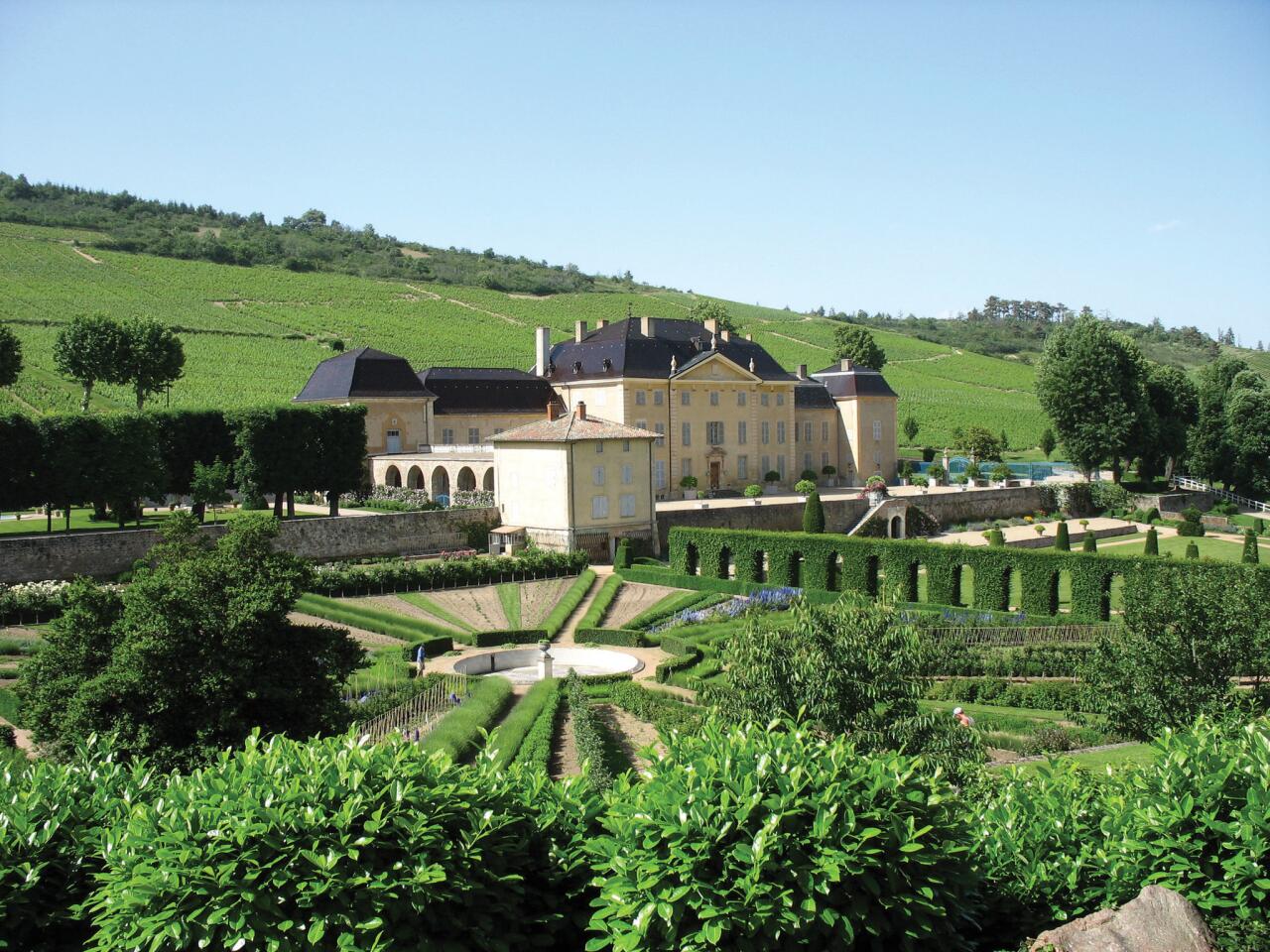
Real wine enthusiasts, when they come to France, may aim for other spots on the map: Bordeaux in the southwest or Burgundy in the center. But the terrain that produces the world’s most refined wines in those regions often turns out to be, well, disappointing: nothing but long rows of vines marching along gentle river valleys.
Beaujolais, on the other hand, is worth a journey and a stay. Most of its wine is merely fun, not quite distinguished. But the countryside is lovely: rugged hills and winding roads, villages with ancient stone churches, forest ridgelines touched at sunset by tendrils of fog. It’s like the wilder parts of Napa, but with church bells and châteaux.
And the foodthis being arguably the “foodiest” part of France, where people talk about the provenance of not only their wines but also their chickensis simply splendid.
-- Doyle McManus
Read more: Beaujolais’ countryside may be France’s prettiest wine region
Pictured: The Chateau de La Chaize, near the village of Odenas. (Doyle McManus / Los Angeles Times)
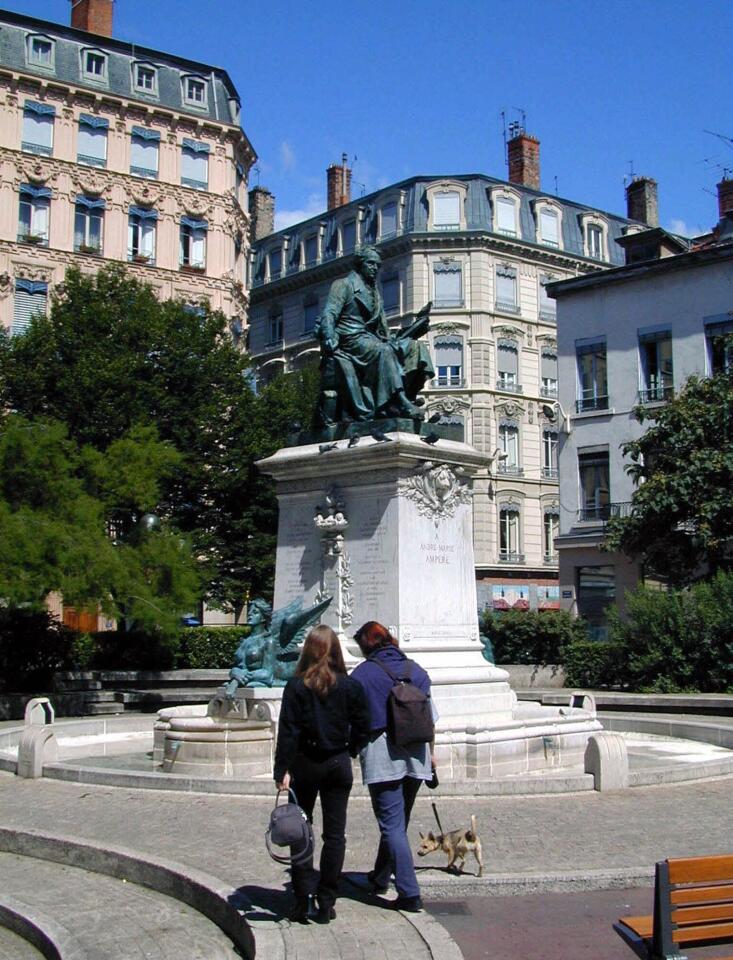
My first hours in Lyon may have been inauspicious in a gastronomic sense, but they were just as satisfying as a dish of raviolis d’escargots: a hot snack, a decent wine and the honor of meeting a high official of the
(David Langford / Associated Press)
Advertisement
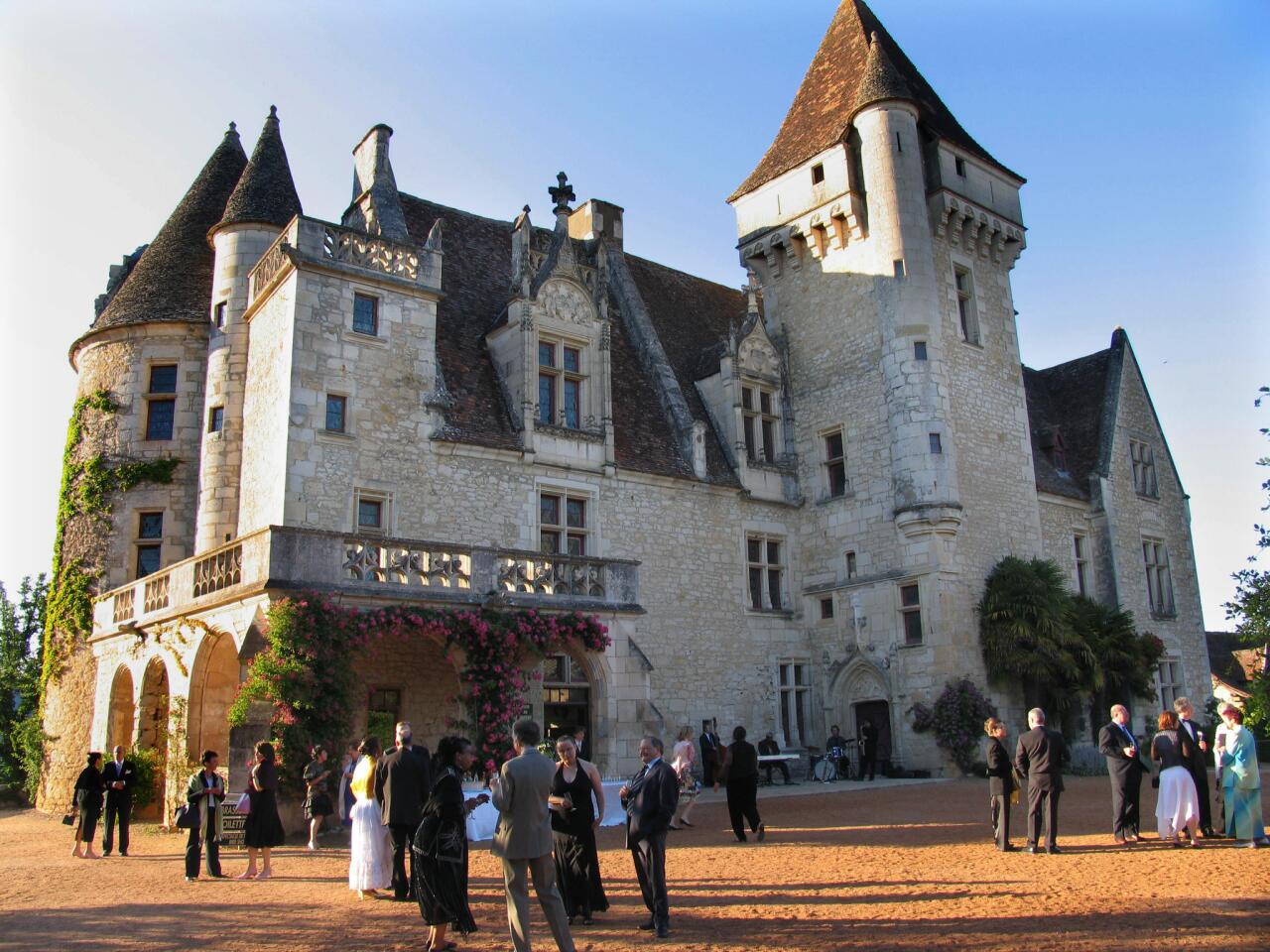
The late Gothic/early Renaissance castle was built in 1489 by François de Caumont for his wife, Claude de Cardaillac. But like other embellishments, the medallions that honor him on the chimney of the small dining room were added by a later owner, Charles Claverie, who began a full-scale restoration in 1900.
Thanks to him, the building was in relatively good repair in 1947, when Josephine Baker married band leader Jo Bouillon in the château’s chapel and moved in.
-- Susan Spano
Pictured: Château des Milandes. (Susan Spano / Los Angeles Times)
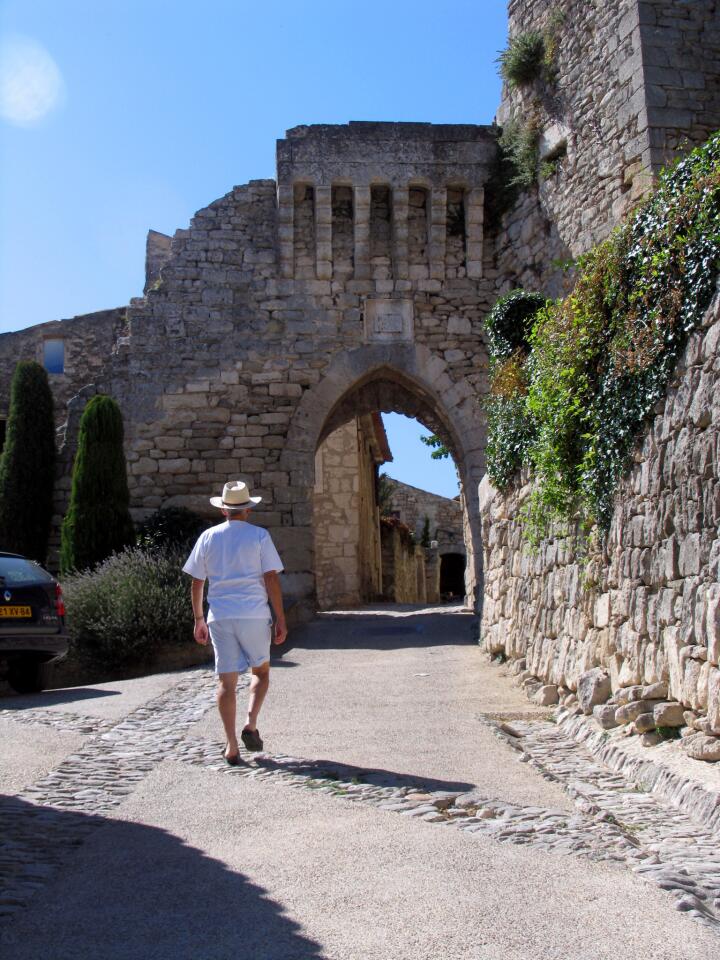
With a population of fewer than 500, a handful of restaurants and a couple of excellent bed-and-breakfast inns nearby, Lacoste is less touristy than such Provencal meccas as St. Remy and Fontaine de Vaucluse. There is also the chateau where the infamous
(Susan Spano / Los Angeles Times)
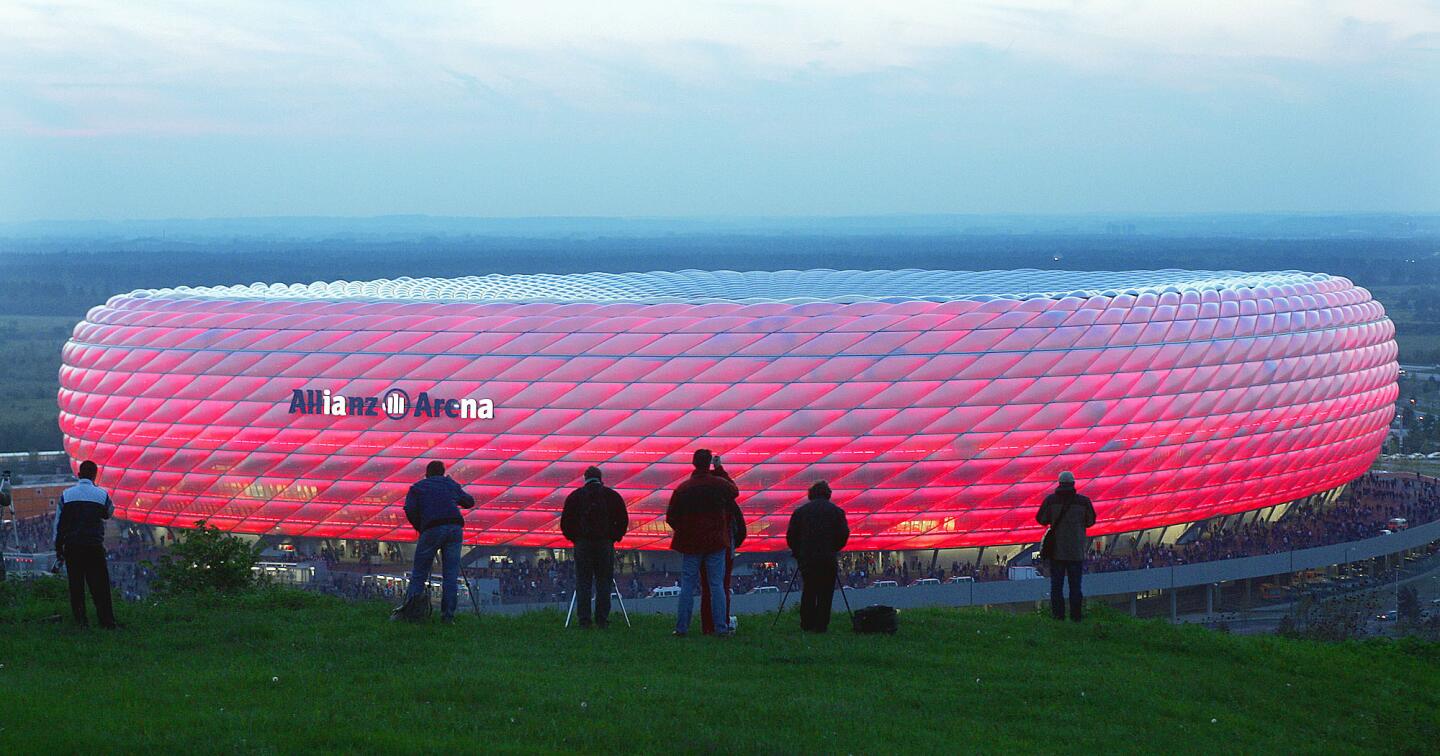
Munich is an easy city to like: clean, bright and livable. It has world-class art museums, stylish shops, wide boulevards, parks and squares. Conviviality overflows in its fabled beer gardens, and its people have an open, animated air.
Joachim von Halasz, a London-based financial analyst who often travels to Munich, knows well the attractions of this southern German city, including its towered and turreted Gothic revival Neues Rathaus, which
-- Susan Spano
Pictured:
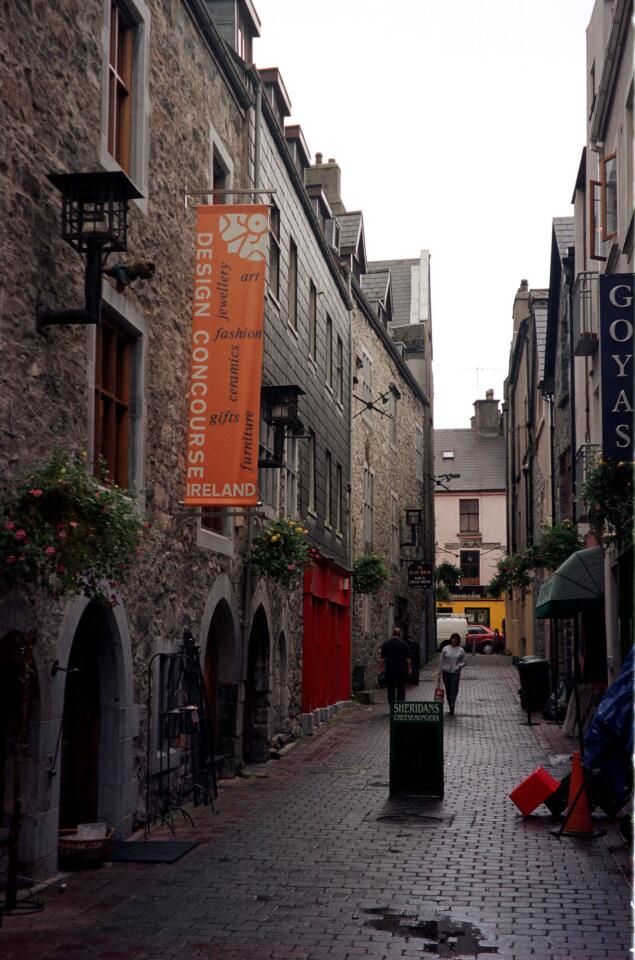
If you’re making plans to visit Ireland, consider starting in Galway City, a compelling curiosity shop of a metropolis that hugs the immense bay celebrated in song. The city of more than 65,000 on the nation’s western flank hums with the vibrancy of the affluent new Ireland and cranks out more festivals than an accordion has folds.
(John Lumpkin / Associated Press)
Advertisement
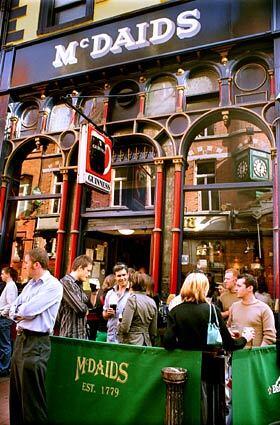
Dublin is the city of the Abbey Theatre, where
Today, it is home to such internationally acclaimed novelists as John Banville, Colm Toibin and
-- Tim Rutten
Read more: Dublin, beyond the Blooms
Pictured: McDaids, once a hangout of some of Ireland’s best writers. (Peter Matthews / For The Times)
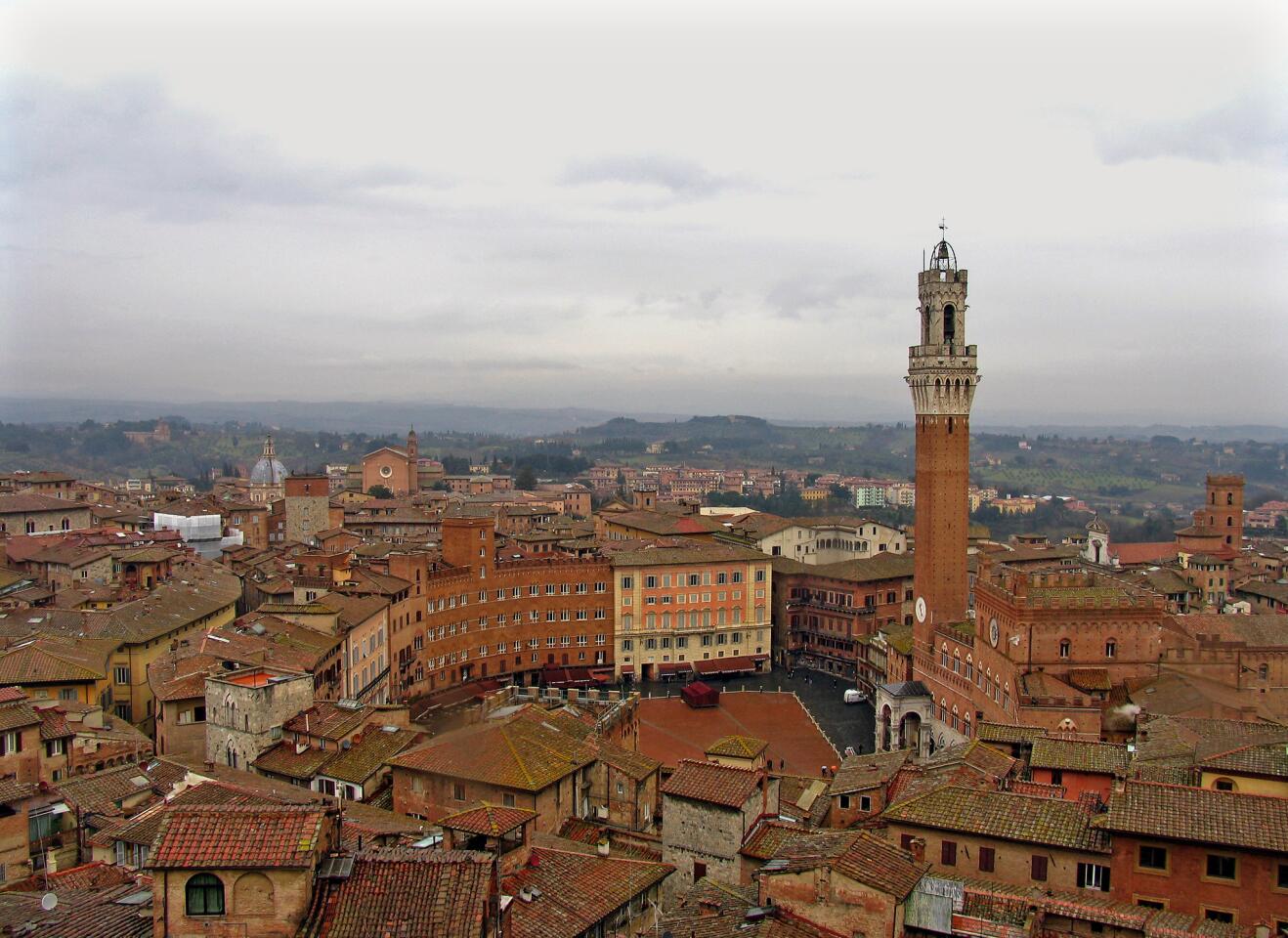
Medieval Siena stretches over three steep hills in the heart of the Chianti region of Tuscany. It’s renowned for its Gothic cathedral as well as its Piazza del Campo, whose paving stones were laid in 1347.
Twice a year, the piazza is transformed. A dirt track is laid around the perimeter in the days before the Palio, always July 2 and Aug. 16. The race a tribute to the Madonna, Siena’s patron saint is of uncertain origin but dates back as far as the 13th century.
The Palio itself is a silk banner dedicated to the Virgin Mary. Each year, Siena artists compete to design the flag for the July contest, and international artists do the same for the August race.
-- Alan C. Miller
Read more: In Siena, victory is everything
Pictured: Siena’s main square. (Susan Spano / Los Angeles Times)
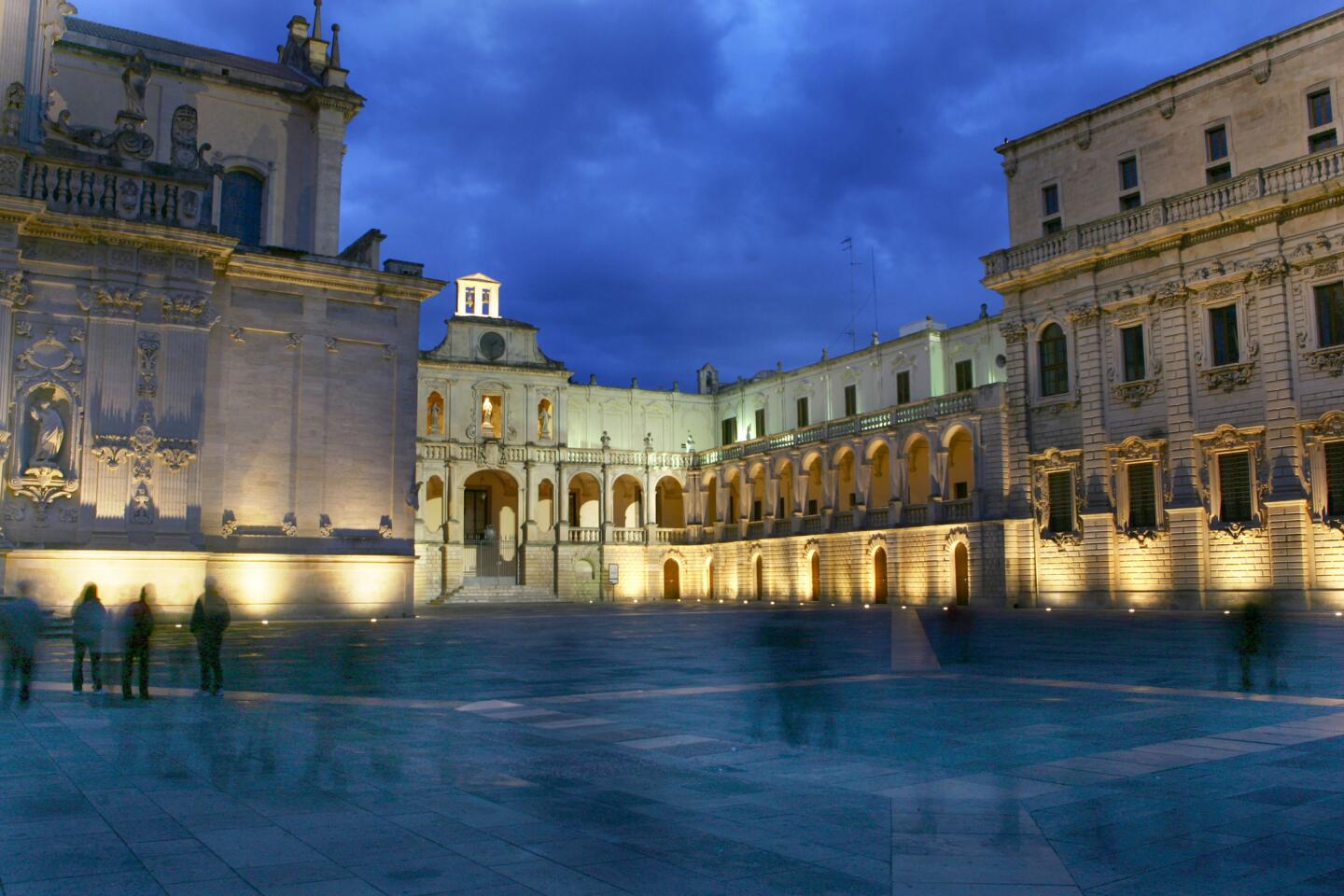
Six years ago or was it a dream? I spent a day and a half in southern Italy on the Adriatic coast, and there I was left mesmerized by the sun-bleached stone, the blue sky, turquoise sea and dazzling white hilltop towns with twisting cobblestoned streets. I feasted on exquisitely pristine seafood and savored homemade orecchiette sauced with limpid green olive oil and bittersweet rapini served in shallow bowls decorated with blue dots. And I’ll never forget the taste of the creamiest burrata cheese, still dripping with whey. (Rocco De Benedictis / For the Times)
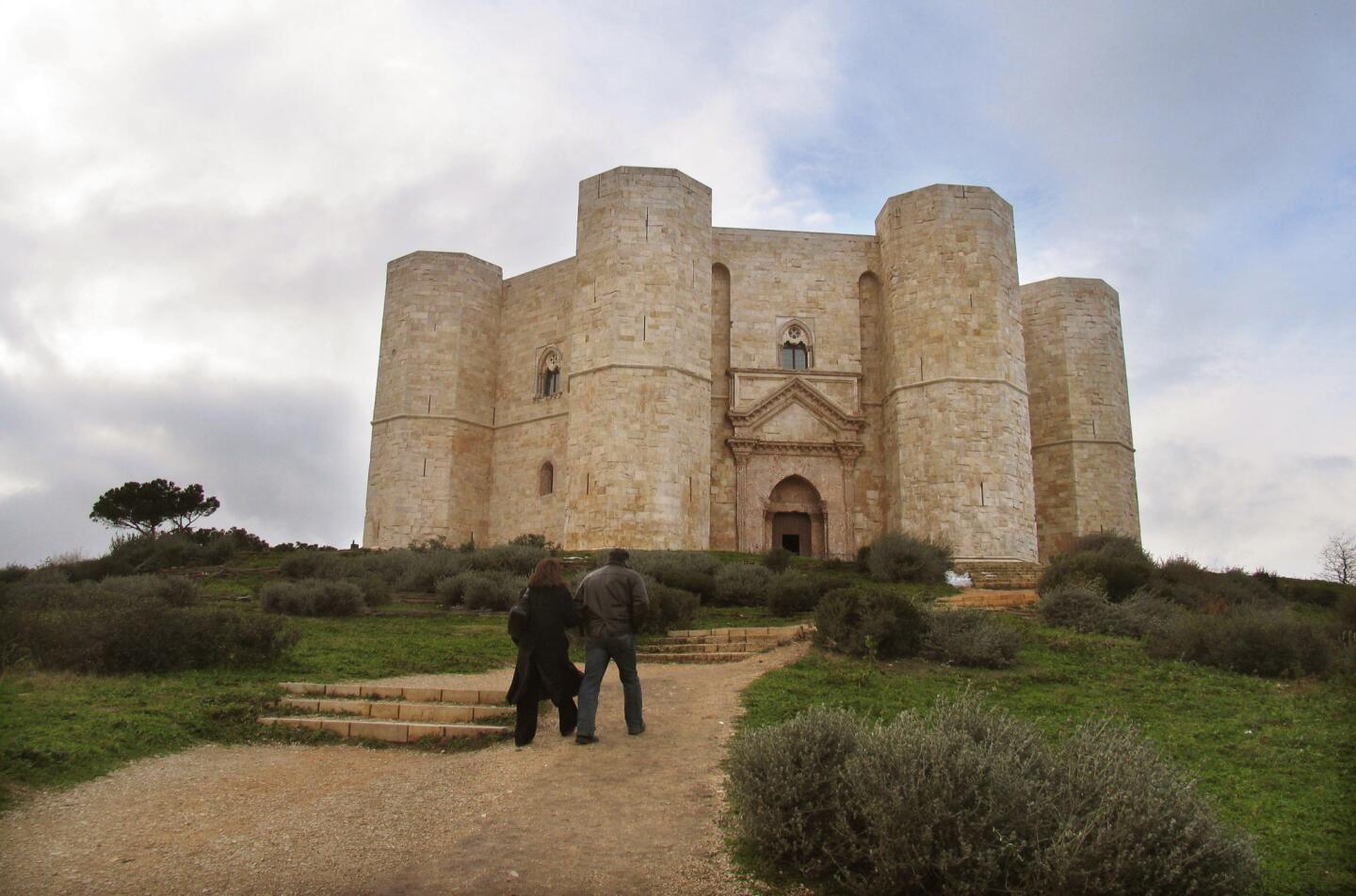
This medieval masterpiece, begun in 1240 -- about the same time as Westminster Abbey -- has eight sides, linked by eight eight-sided towers.
Its seemingly endless repetition of the octagonal form has haunted mathematicians through the ages who see it as a work of pure geometry. The more mystically inclined impute occult significance to this temple of the octagon, noting that great buildings around the world, such as Jerusalem’s 1,300-year-old Dome of the Rock, also have eight sides.
Whether icon or equation, the castle has more vibes than “The Da Vinci Code,” as I discovered when I came here in February, drawn like iron shavings to a magnet. I didn’t know why I had to see it, except I love a good mystery. And Castel del Monte is surely one, a model for the labyrinthine library in
-- Susan Spano
Read more: In Italy, a riddle wrapped in stone
Pictured: Castel del Monte. (Susan Spano / Los Angeles Times)
Advertisement
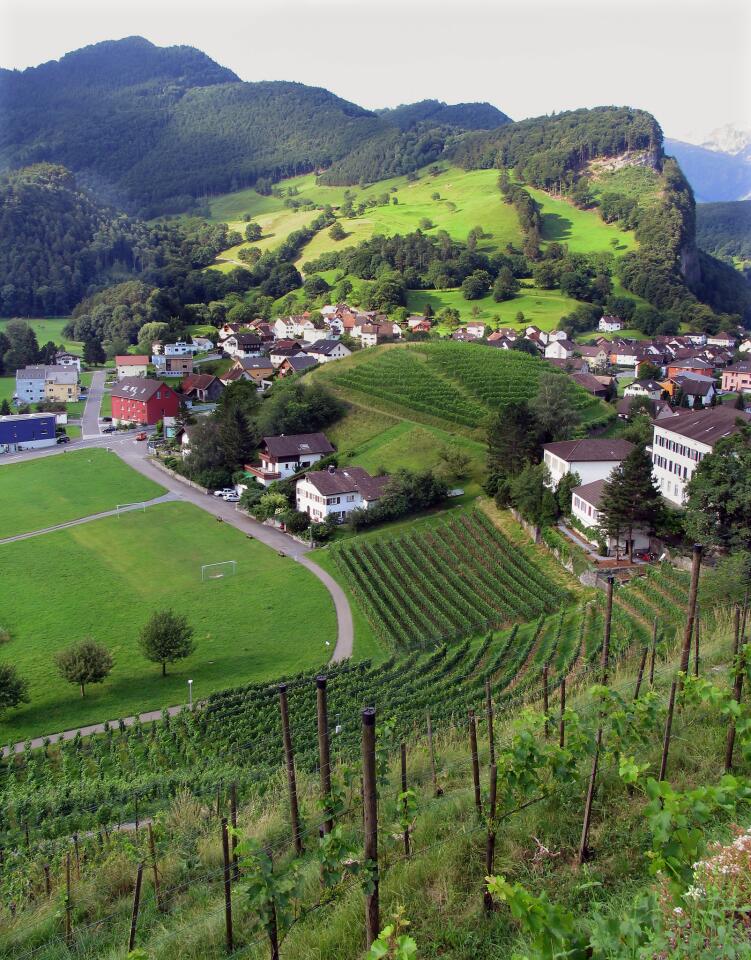
Liechtenstein is a little German-speaking principality tucked into the Alps between Switzerland and Austria.
The Rhine River runs wide and icy-white along the western border, and the prince’s cross-timbered castle nestles in an aerie on the mountainside.
At seemingly every turn, there are trail heads and bike paths.
Pretty, flower-wreathed towns dot the lowlands.
A winding road leads east into the mountains, through a tunnel and across meadows to the ski area of Malbun, which attracts outdoorsy families in the summer.
-- Susan Spano
Read more: Liechtenstein, a principality tucked into the Alps
Pictured: A hamlet on the outskirts of Gutenberg Castle near the town of Balzers. (Susan Spano/Los Angeles Times)
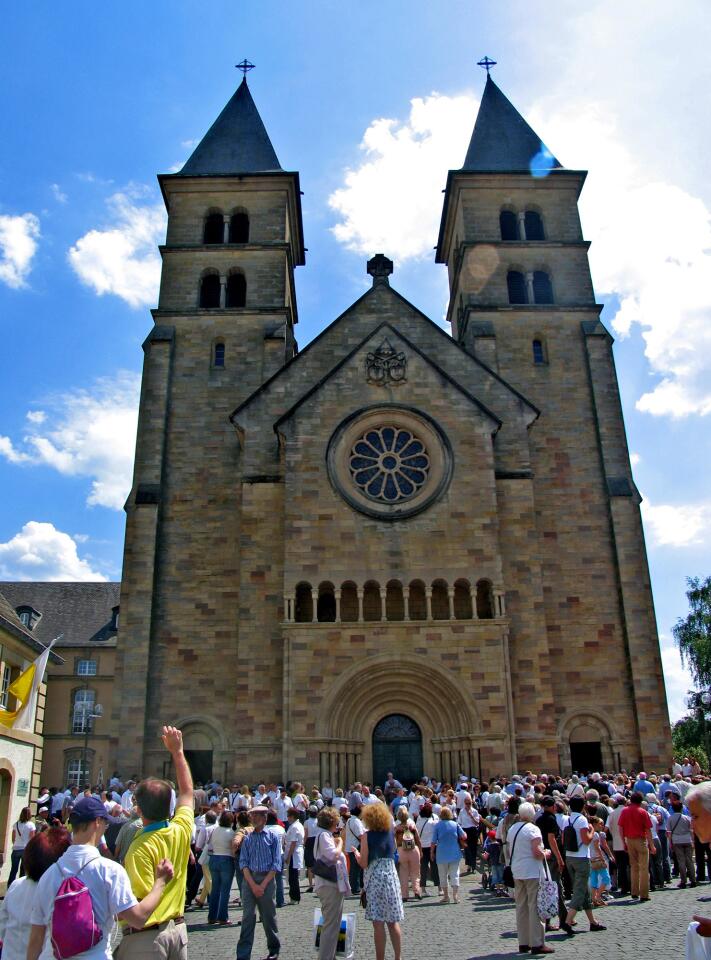
When I set out to visit the smallest countries in Europe, I put Luxembourg at the top of the list. Among the Continent’s mini-states, it comes to mind maybe as quickly as Fredonia, from the 1933 Marx Brothers movie, “Duck Soup.”
Then I opened my atlas and found that Luxembourg comes in sixth, behind Andorra, on a list of Continental Europe’s dinkiest nations. It is almost as big as
Everything’s relative, of course. You can drive across the grand duchy in 30 minutes. It looks so much like neighboring Germany, France and Belgium that you’d miss it altogether if you didn’t know it was there.
-- Susan Spano
Read more: Luxembourg: modern, idyllic and battle-tested
Pictured: Basilica of St. Willibrord. (Susan Spano / Los Angeles Times)
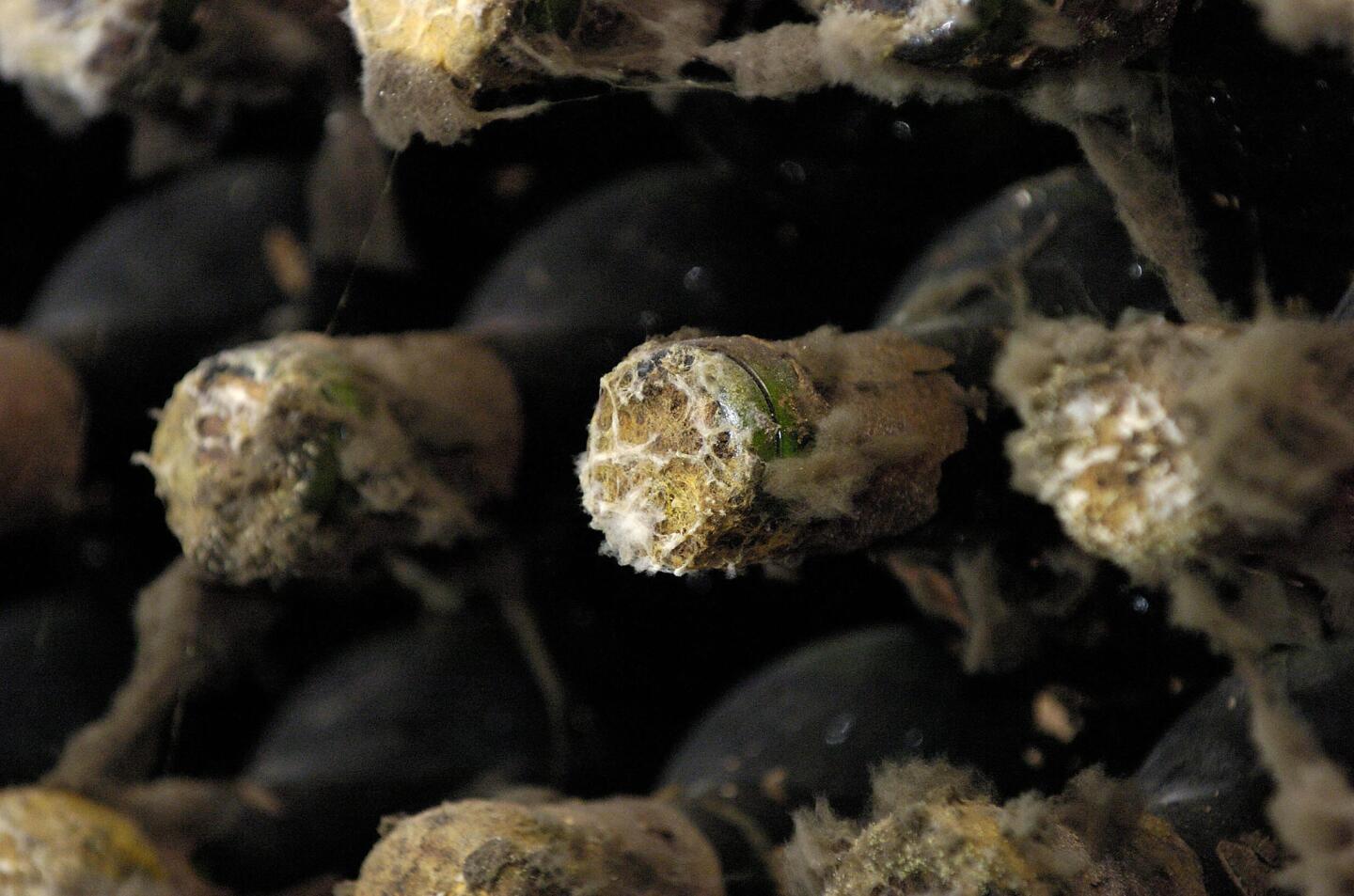
I flew into the capital city, Chisinau (Kee-shih-now), from Paris. If you are thinking of going to Romania to see Dracula’s Castle or to Ukraine for those onion-domed churches, consider Moldova too. U.S. citizens don’t need a visa.
Explore Chisinau, then head out to the countryside, which is filled with grapevines and green fields, lovely but very poor.
Chisinau, in the center of the country, is slowly recovering from six decades of Soviet rule. This was the Moldavian Soviet Socialist Republic until independence in 1991. Construction cranes dot the skyline. Billboards advertising Mercedes-Benz cars and Orange cellphones appear on streets filled with aging buses belching exhaust and sidewalks often in poor repair.
-- Kay Mills
Read more: Exploring Moldova’s wine caves
Pictured: Cobwebs cover the caps of aged bottles of wine at Milestii Mici winery in Moldova. (Vadim Denisov / AFP / Getty Images)
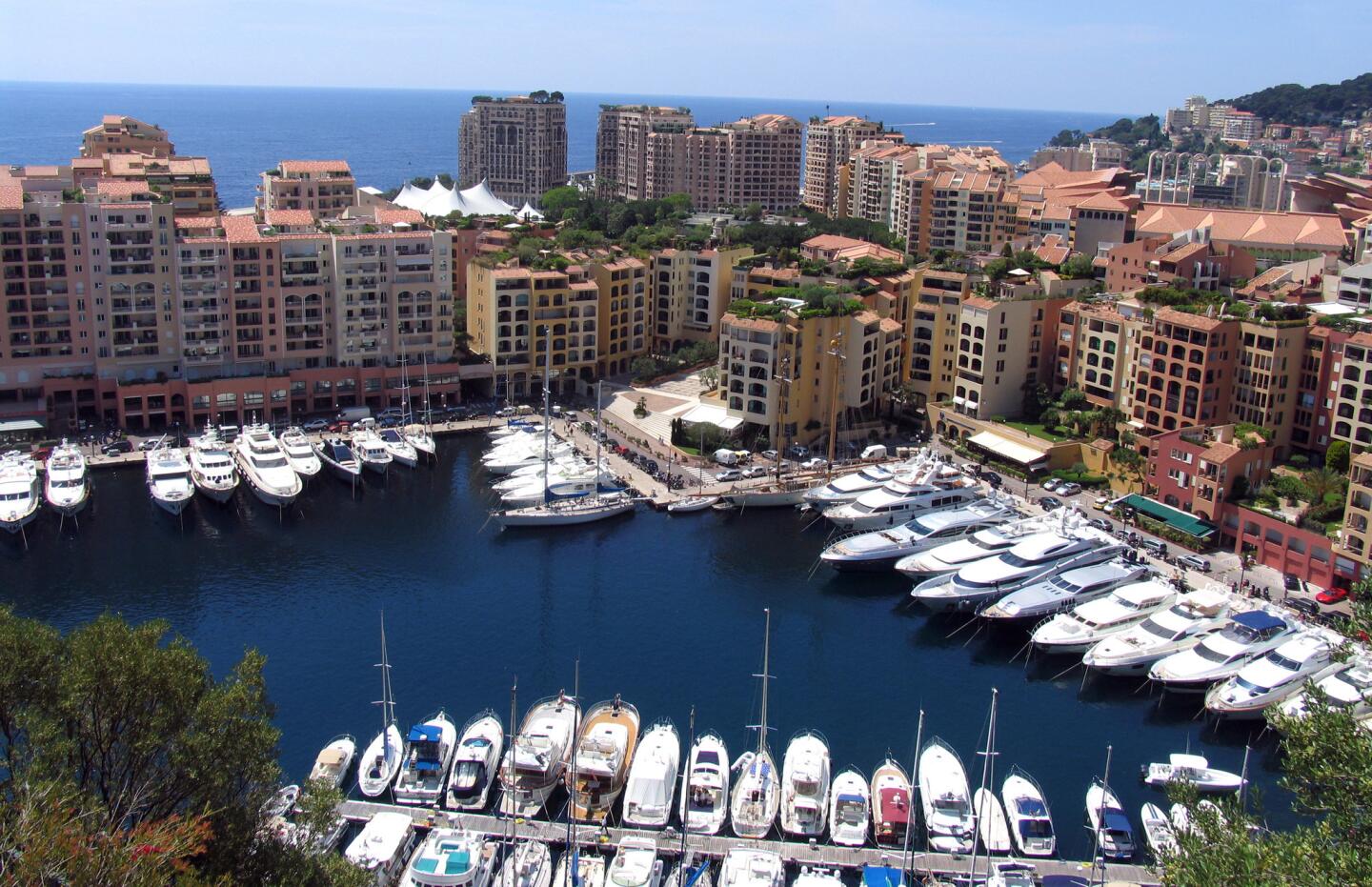
My friend Polly Platt loves Monaco, a silver slipper of a country on a little shelf of the French Riviera not much bigger than Monte Carlo, its capital. But she also attended the wedding of
My experience of the principality, now ruled by the late prince’s son, Albert II, was less memorable. I stopped here sans tiara a few years ago on a budget cruise and returned to the ship like a
So I decided to do it in style when I returned in the spring with Sarah, my 20-year-old niece. During the Grand Prix, I booked a room for one night at the luxurious Hotel Port Palace overlooking the harbor and got tickets to watch a day of practice runs from the grandstand.
-- Susan Spano
Read more: A trove of tiny treasures
Pictured: The Port of Monaco with grandstands for the 2008 Grand Prix, lower right. (Susan Spano / Los Angeles Times)
Advertisement

A few intrepid travelers came here for suntans and seafood in the Soviet era, when Montenegro was a part of the Federal People’s Republic of Yugoslavia and hotel rooms were a steal. But the breakup of the former Yugoslavia, of which Serbia and Montenegro were a part, in the early 1990s, followed by a dark decade of ethnic cleansing and war, virtually erased the region from the tourist map.
Now, with peace restored and all but two of the six republics that made up the former Yugoslavia independent, vacationers have started returning to the southern Balkans.
-- Susan Spano
Read more: Montenegro plays understudy to the Riviera
Pictured: Hotel Sveti Stefan, a former fortress, on the Montenegron coast. (Susan Spano / Los Angeles Times)
The big year in Warsaw is going to be 2010, the 200th anniversary of composer Chopin’s birth. But if you go before the hoopla starts, you can visit scores of Chopin sites and take advantage of cheaper hotel rates, which are generally lower than those in Western European capitals. For instance, in early April, doubles at the stylish Warsaw InterContinental will start at around $140 a night, and there are plenty of nice guesthouses for half that amount. The city is nuts about Chopin, who died in Paris in 1849 but left instructions for his heart to be returned to Warsaw for interment.
-- Susan Spano
Pictured: Old Town Warsaw. (Andrzej Rybczynski / EPA)
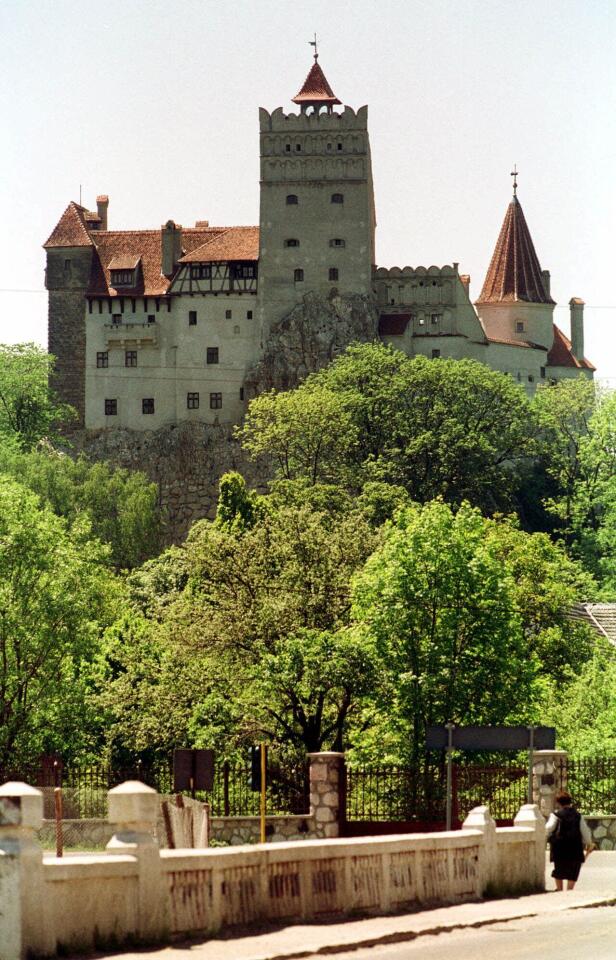
At my first sight of Bran Castle high atop a hill, chills race up my
“A beautiful garden once stood at the base of the castle, tended by Queen Marie who used the medieval fortress as a summer royal residence,” my tour guide says, flicking ash off her cigarette. Mountain winds whip as I walk up the long, spiral cobblestone path to the castle entrance.
“Saxons built Bran Castle in 1382 to protect the gateway to Transylvania at Bran pass. By building the castle, the Saxons gained their freedom from the Romanians. In order to provide rapid access to weaponry and fortifications, a labyrinth of secret passages and tunnels exist throughout the castle and beneath its courtyard.”
-- Laura Elliott
(Eugeniu Salabasev / Associated Press)
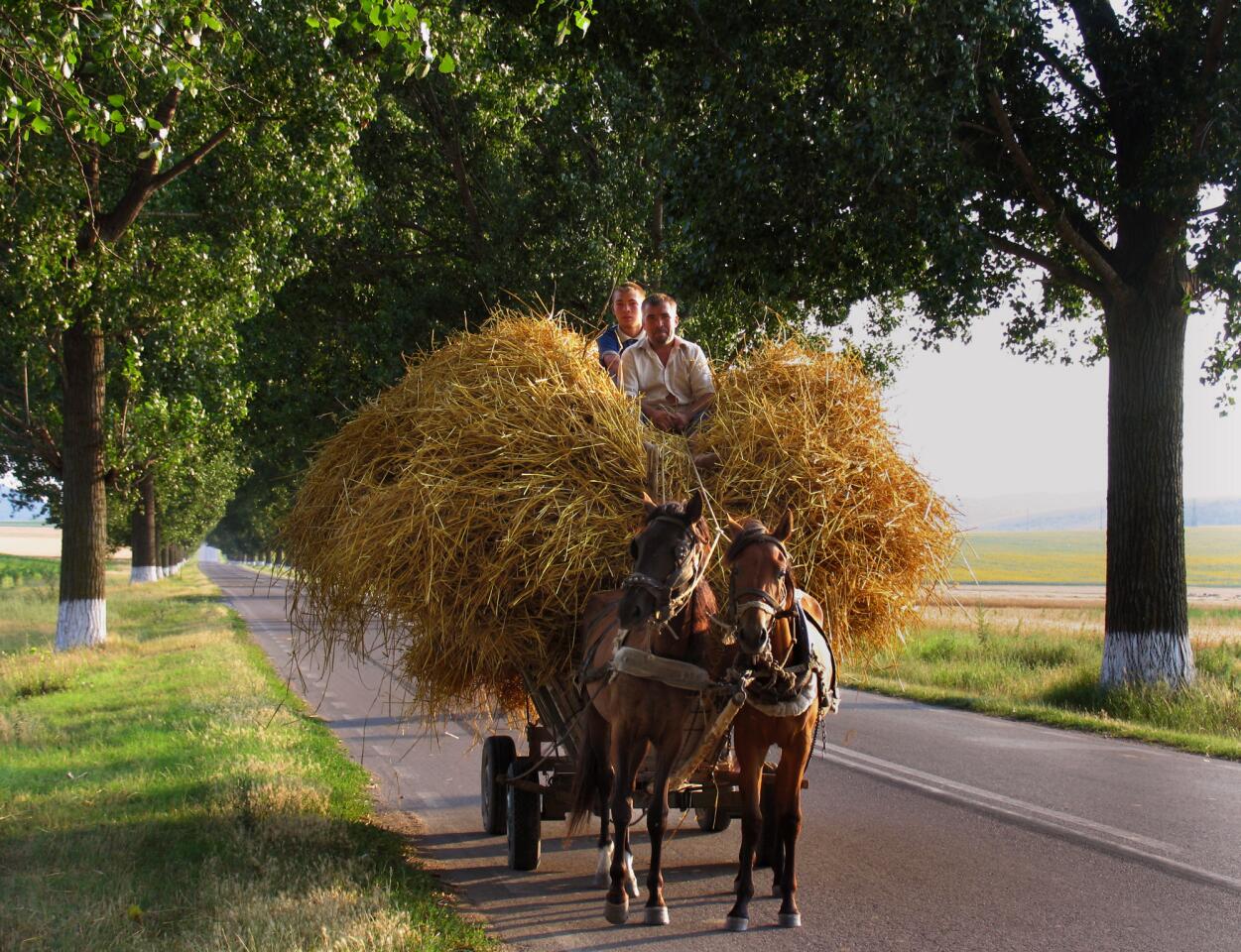
At the end of its 1,771-mile journey across Europe, the mighty Danube River seems to give up trying to reach the Black Sea. It turns north, away from the coast, crosses the lonely steppe country, then frays into myriad channels, marshes, swamps and lakes edged by waterlogged willow trees.
Colonies of birds fly in from Asia, Africa and Siberia. In the stalled, murky water, giant carp and catfish lurk, sought by fishermen who live in villages that can be reached only by boat.
This is the Danube River delta, a 1.6-million-acre World Biosphere Reserve, out of time, unknown and remote, a lost puzzle piece at the wild, eastern edge of Europe. To see it is proof that the meandering river has never lost heart.
-- Susan Spano
Read more: The Danube’s green waltz in Romania
Pictured: A horse-drawn hay cart modified with auto tires constitutes traffic in Romania’s Danube River Delta in northern Dobrogea. (Susan Spano / Los Angeles Times)
Advertisement
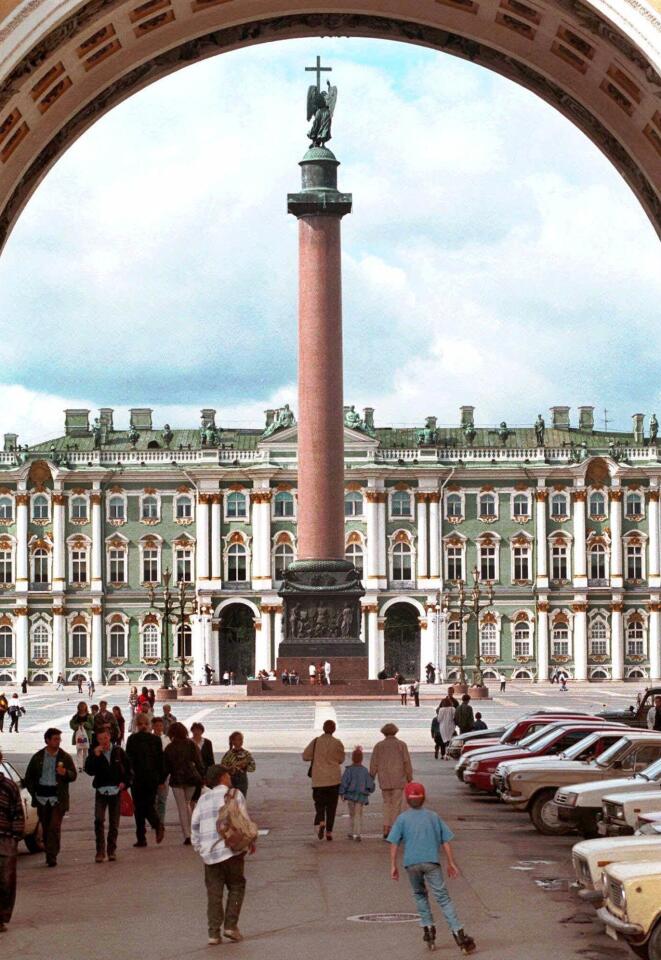
With 350 exhibition rooms and 3 million items in the Hermitage, the guidebooks said it would take seven years to view everything there, even with spending only one minute in front of each piece. So Molly and I decided to visit exhibits that could be seen nowhere else.
For 3 1/2 hours, we walked through history, entering and exiting the palace’s elegant throne rooms, living rooms and bedchambers. In the White Dining Room, we saw the mantle clock that is still stopped at 2:10, the early-morning hour in 1917 when the Bolsheviks entered the room and ousted the leaders of the fledgling Provisional Government, changing the course of Russian history.
-- Don Drake
Read more: Roaming Russia: St. Petersburg, with guide and without
Pictured: Visitors walk through Palace Square under the Alexander Column of the Winter Palace. (Dmitry Lovetsky / AP)
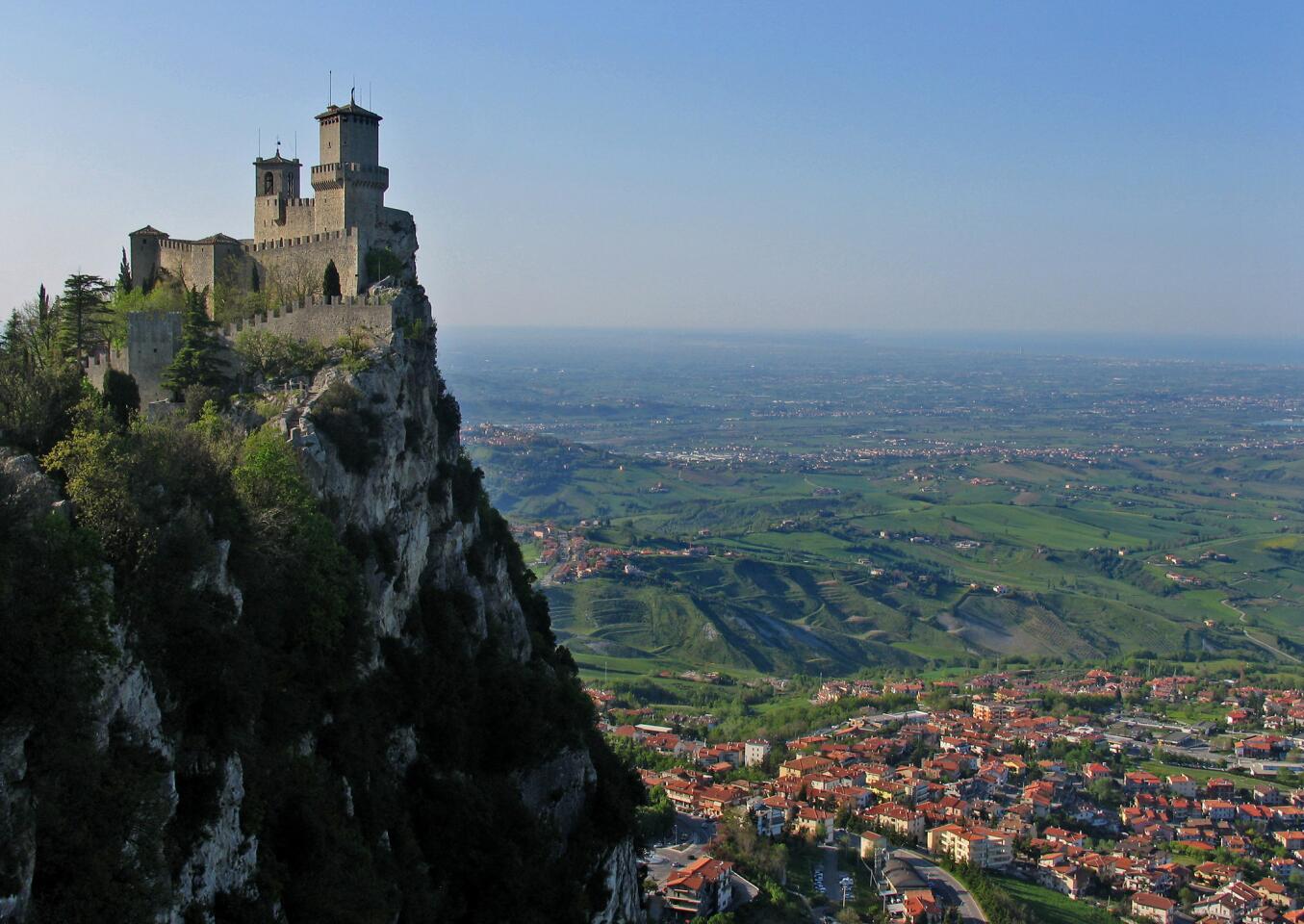
“Go slow. There isn’t a lot to see,” an attendant at a tourist information office told me when I drove into the Most Serene Republic of San Marino. Her candor was, I soon discovered, just one aspect of the wee country’s singularity.
Set on an outcropping of the Apennine Mountains, it is the world’s oldest republic, based on its founding in the early part of the 4th century. At that time, a Christian stonemason named Marinus (Italianized to Marino), forced by agents of the Roman Emperor Diocletian to work at the Adriatic seaport of Rimini, escaped to 2,500-foot Mt. Titano about 10 miles west. The little settlement that collected around him was apparently too poor and remote to be worth Roman reprisal, so Marino (who was eventually canonized) could say to his compatriots on his deathbed, “I leave you free.”
-- Susan Spano
Read more: A trove of tiny treasures
Pictured: Guaita Tower, one of three crowning Mt. Titano, overlooks the city of San Marino below. (Susan Spano / Los Angeles Times)
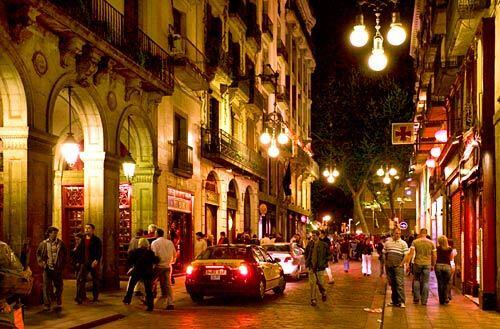
Barcelona, Spain
Barcelona pulsates with history. You can feel it as you stroll the Bari Gotic (Gothic Quarter) or ping-pong off people during the Festival of Santa Lucia. It’s the city of Gaudi and its improbable edifices and the dark, narrow contrast of Barceloneta, or Little Barcelona. It’s beautiful, friendly people, scammers and getting your pocket picked on La Rambla. It’s great food, museums and xocolata (a molten chocolate drink).
-- Kevin Williams
Read more: At Barcelona’s heart, the soccer stadium
Pictured: Plaza Real. (Sisqui Sanchez / For The Times)
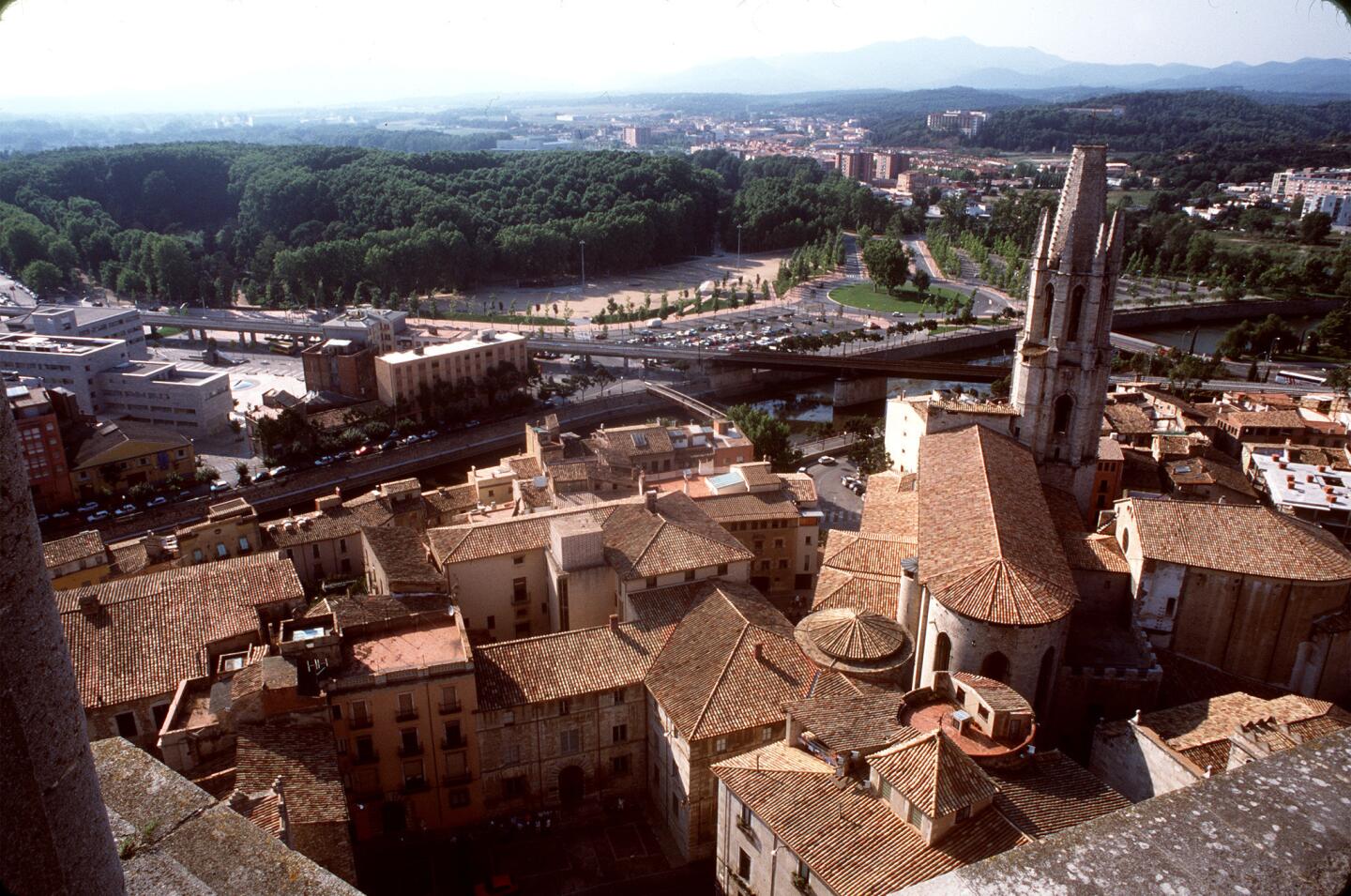
A growing number of tourists is coming to Segovia, a city in Spain’s Castile region, not only to see its towering Roman aqueduct but also to get a glimpse of a rediscovered Jewish past. “People want to see the Jewish quarter because it’s practically unknown and because they don’t expect it,” said Marta Rueda, a guide who once led former Israeli Prime Minister
Granted, the Jewish cemetery stands on an unmarked hill opposite the town; the old synagogue has been turned into Corpus Christi Church; and about 100 Jewish homes were leveled centuries ago to make way for a vast Gothic cathedral. Nowadays, the most notable Jewish features of Segovia are its modern eateries, such as the Menora Café and El Fogón Sefardí restaurant. Nonetheless, the mere investigation of its Jewish legacy “is something new.”
-- Michael Levitin
Read more: Spain connects with Jewish history via Sephardic Routes
Pictured: Girona, one of the finest preserved Jewish quarters in Europe (Christopher Reynolds / Los Angeles Times)
Advertisement
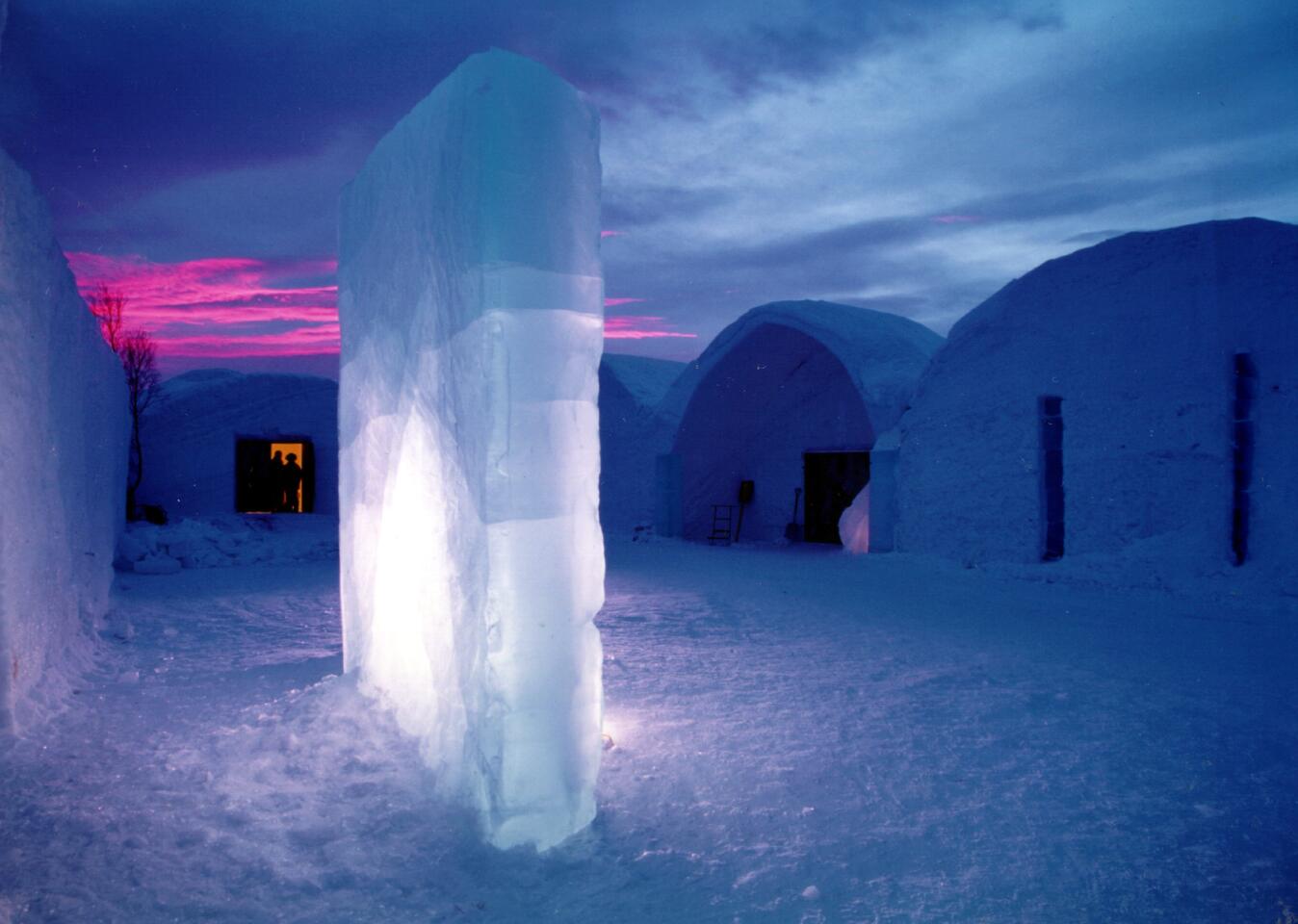
Every winter since about 1990, sculptors have built a hotel and bar made of ice blocks from the nearby Torne River. When the spring thaw arrives, the facilities melt. New ones are created the next winter, usually opening in early December.
Sleeping in an ice room is an unforgettable -- though not entirely comfortable -- experience. After all, it’s apt to be minus 20 or 30 degrees.
For summertime visitors, there’s a lodge with chalets and lots of authentic Lapland adventure. The sun never sets for 100 days, and the temperature rarely rises above 75.
Getting there, getting in: SAS flies from Stockholm to Kiruna, where guests transfer to a bus for the trip to Jukkasjarvi, 10 miles east. For reservations and info: www.icehotel.com.
-- Susan Spano
Pictured: A 2003 version of Sweden’s Icehotel. (Unknown / Handout)
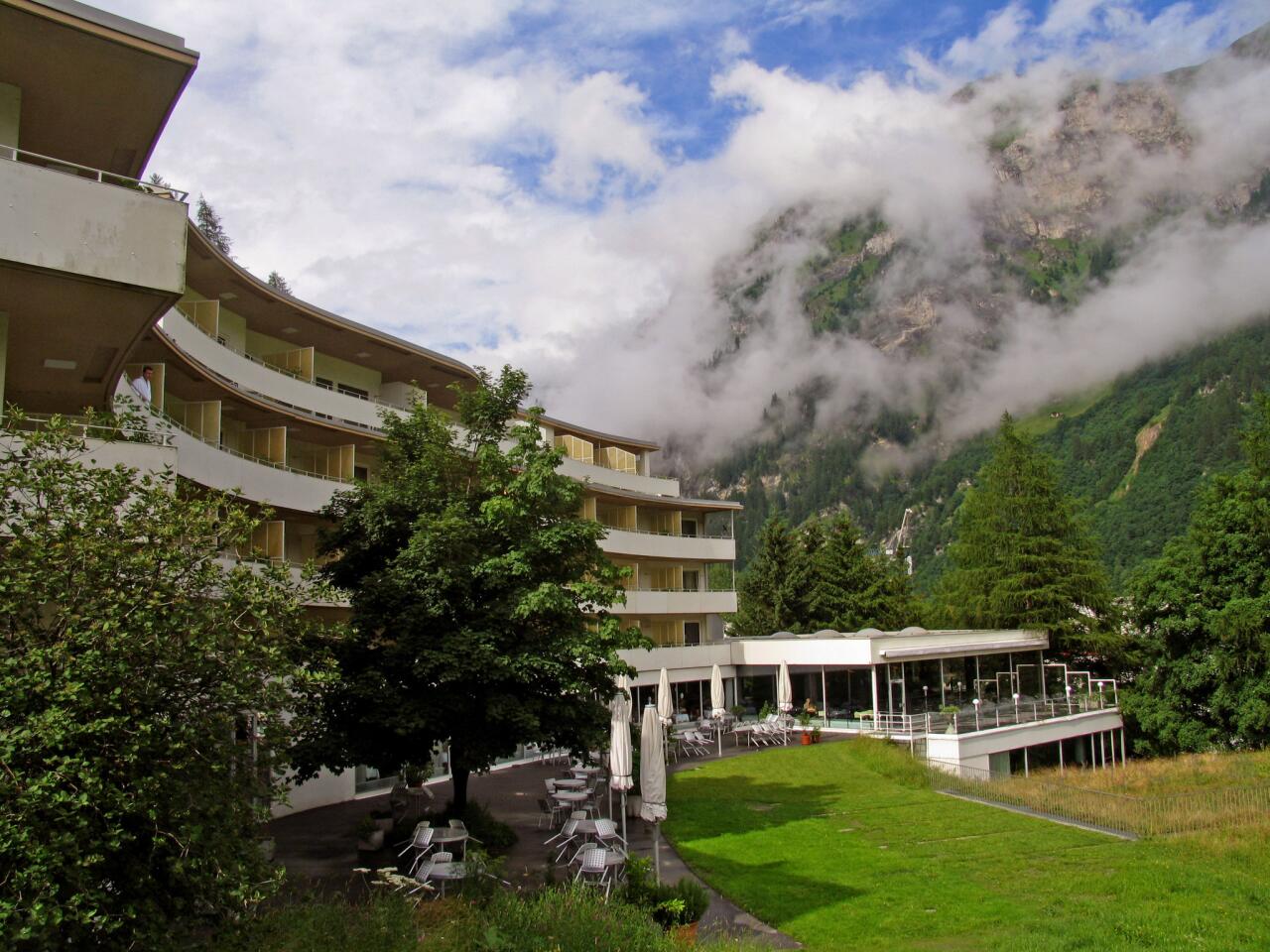
Rain pelted the windshield as I drove up the Vals Valley. Waterfalls coursed over cliff faces, and the tops of the Alps were lost in fog.
Not the kind of weather that walkers who come to Vals in the summer long for. But the rain suited me. I was headed for a spa about 120 miles southeast of Zurich, where I planned to spend the next 24 hours.
I admit it: I like fancy spas and will go out of my way for a Brittany seaweed wrap or a four-handed ayurvedic massage.
But I didn’t come to Vals for that -- at least, not strictly so. I came to see the stunning, contemporary bathhouse designed by Peter Zumthor.
-- Susan Spano
Read more: At the Vals spa in Switzerland, a duet of water and stone
Pictured: The village of Vals. (Susan Spano / Los Angeles Times)
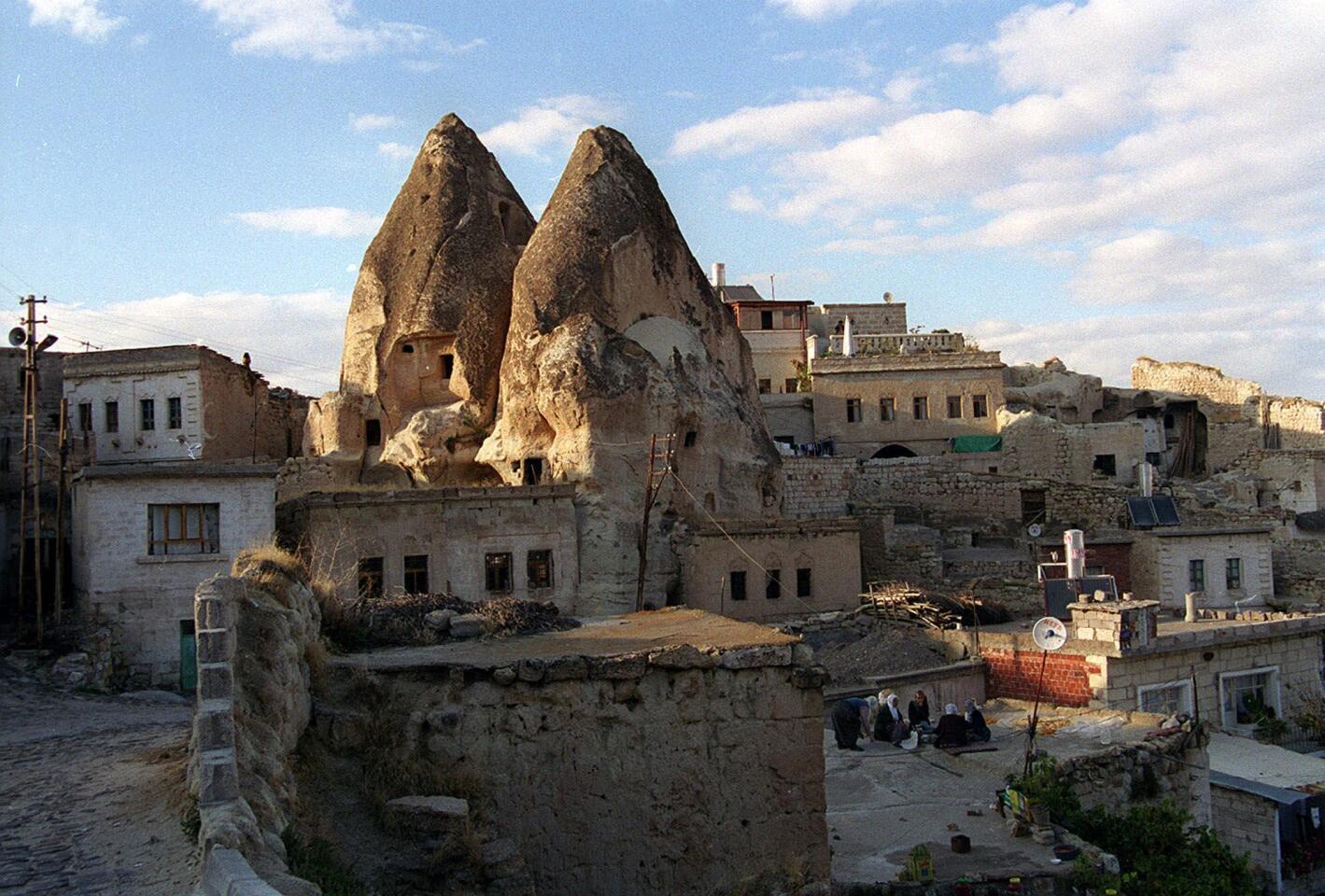
A popular attraction in central Turkey, Cappadocia is known for the fairy-tale-like rock formations that bespeckle the region. Called fairy chimneys, or hoodoos, these formations have been carved by erosion over the millennia. Fairy chimneys can be found in other parts of the world such as Bryce Canyon in
Christians fleeing Roman persecution took refuge in Cappadocias rocky terrain early in the first millennium. By the 4th century, a monastic community formed in central Cappadocia.
Read more: Cappadocia’s alien-like landscape
Pictured: Examples of Cappadocia’s fairy chimneys. (STR / Associated Press)
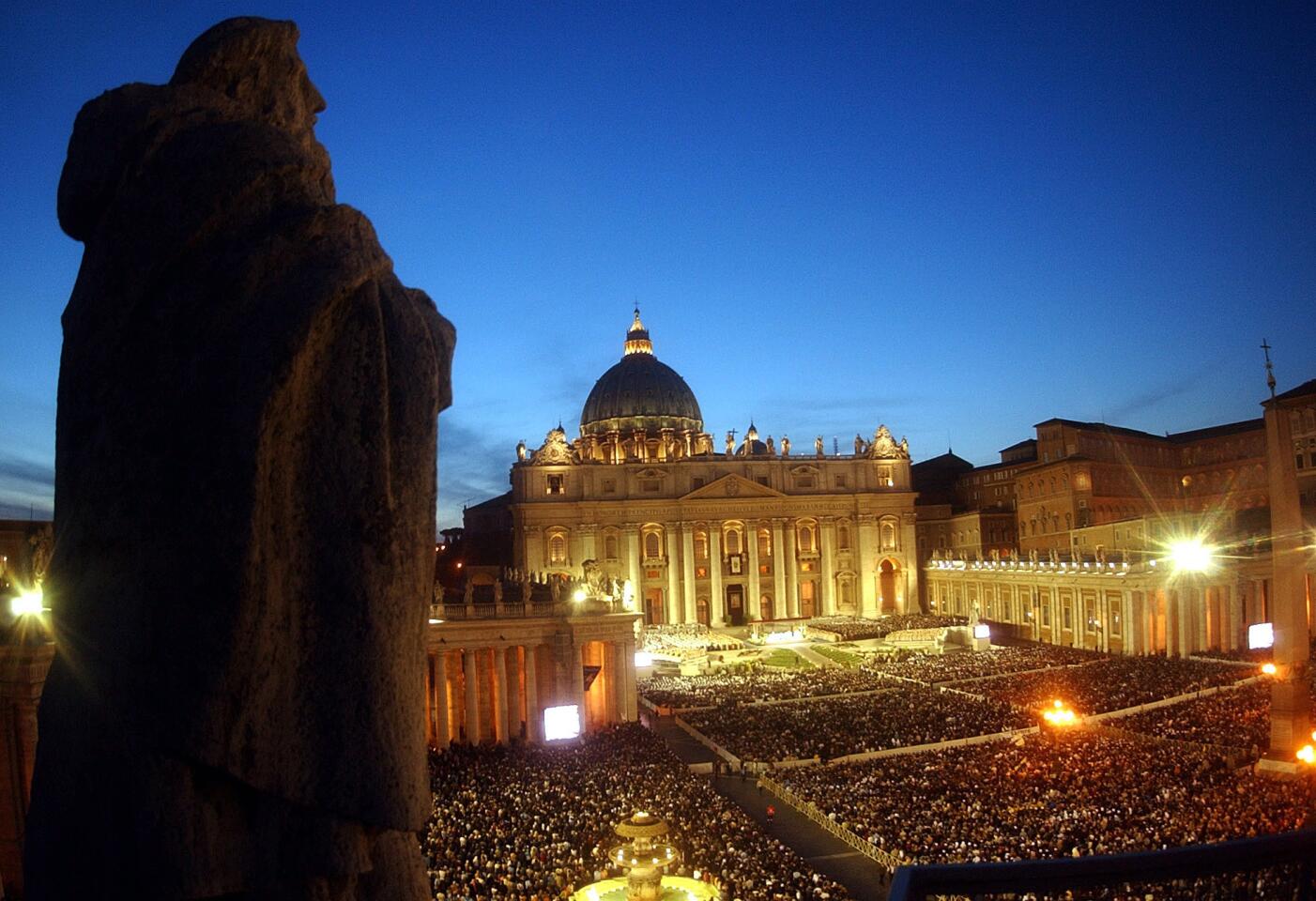
A view of St. Peter’s Square and Basilica at dusk during Pope John Paul II’s 25th anniversary Mass at the Vatican, Thursday, Oct. 16, 2003. Tens of thousands of pilgrims streamed into St. Peter’s Square for the Mass at 6.pm. - about the same time a quarter-century ago that white smoke from a Vatican chimney alerted the world that a Polish cardinal named Karol Wojtyla had been elected the first non-Italian pope in 455 years. (AP Photo/Massimo Sambucetti) (MASSIMO SAMBUCETTI / AP)
